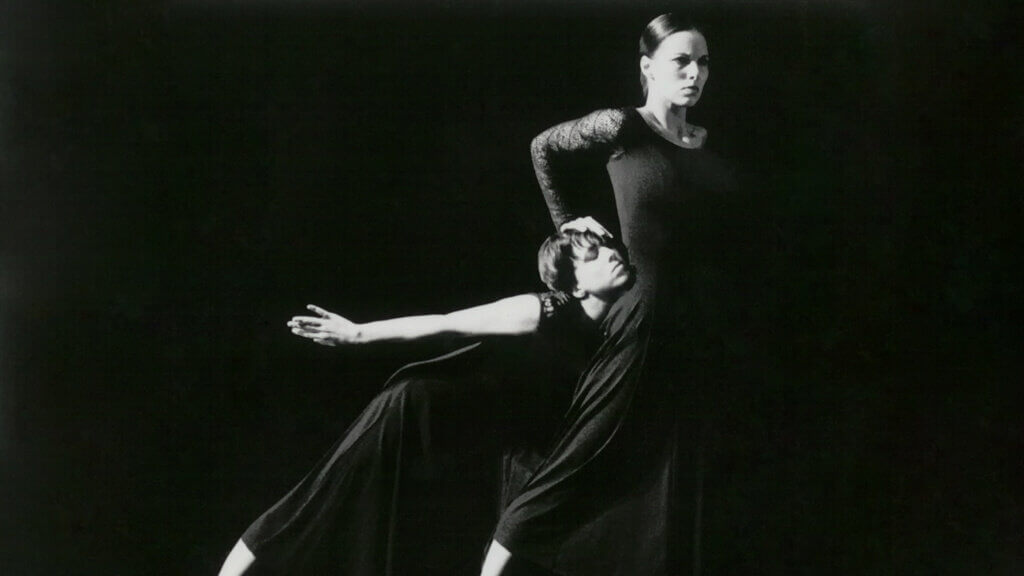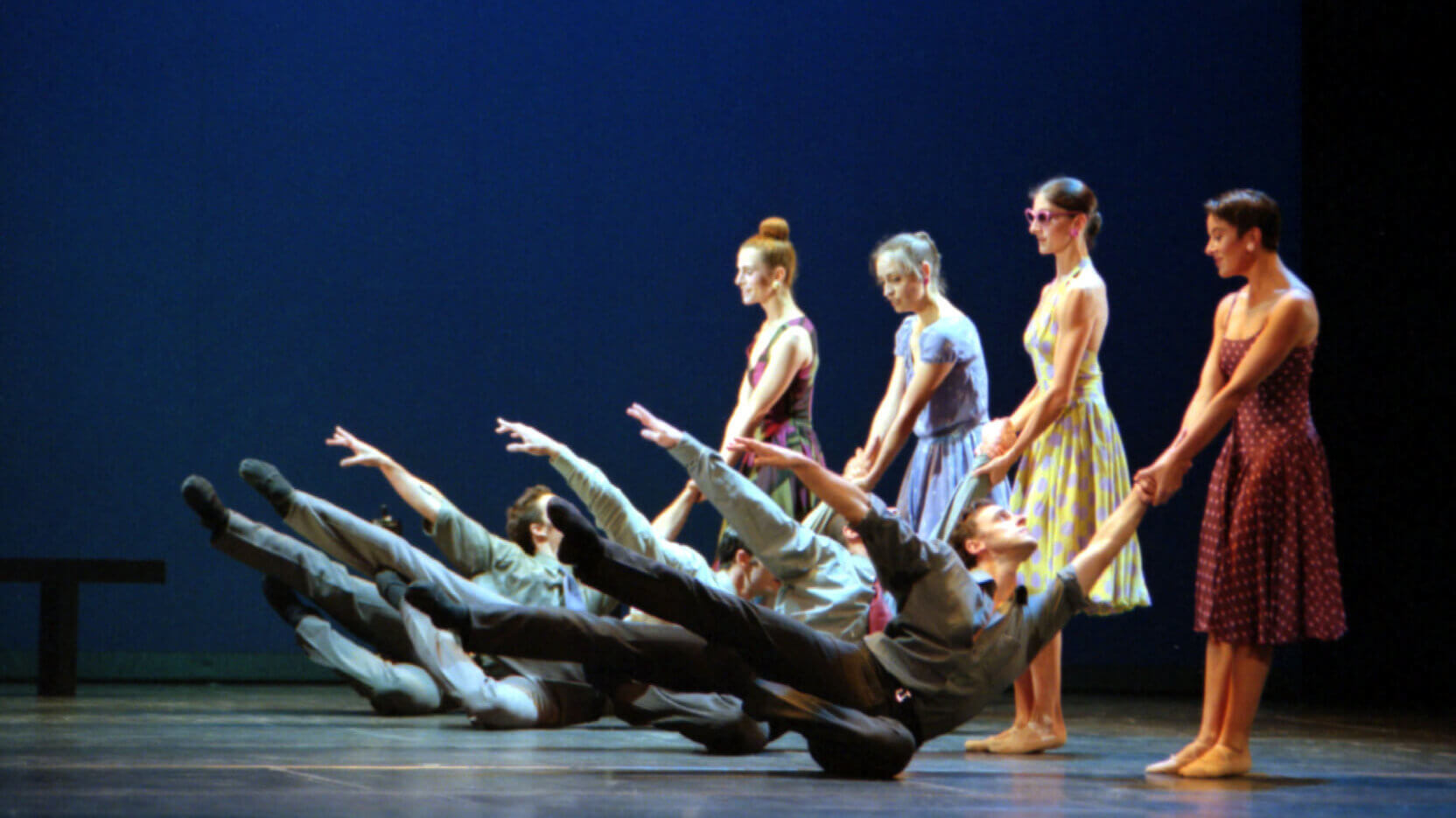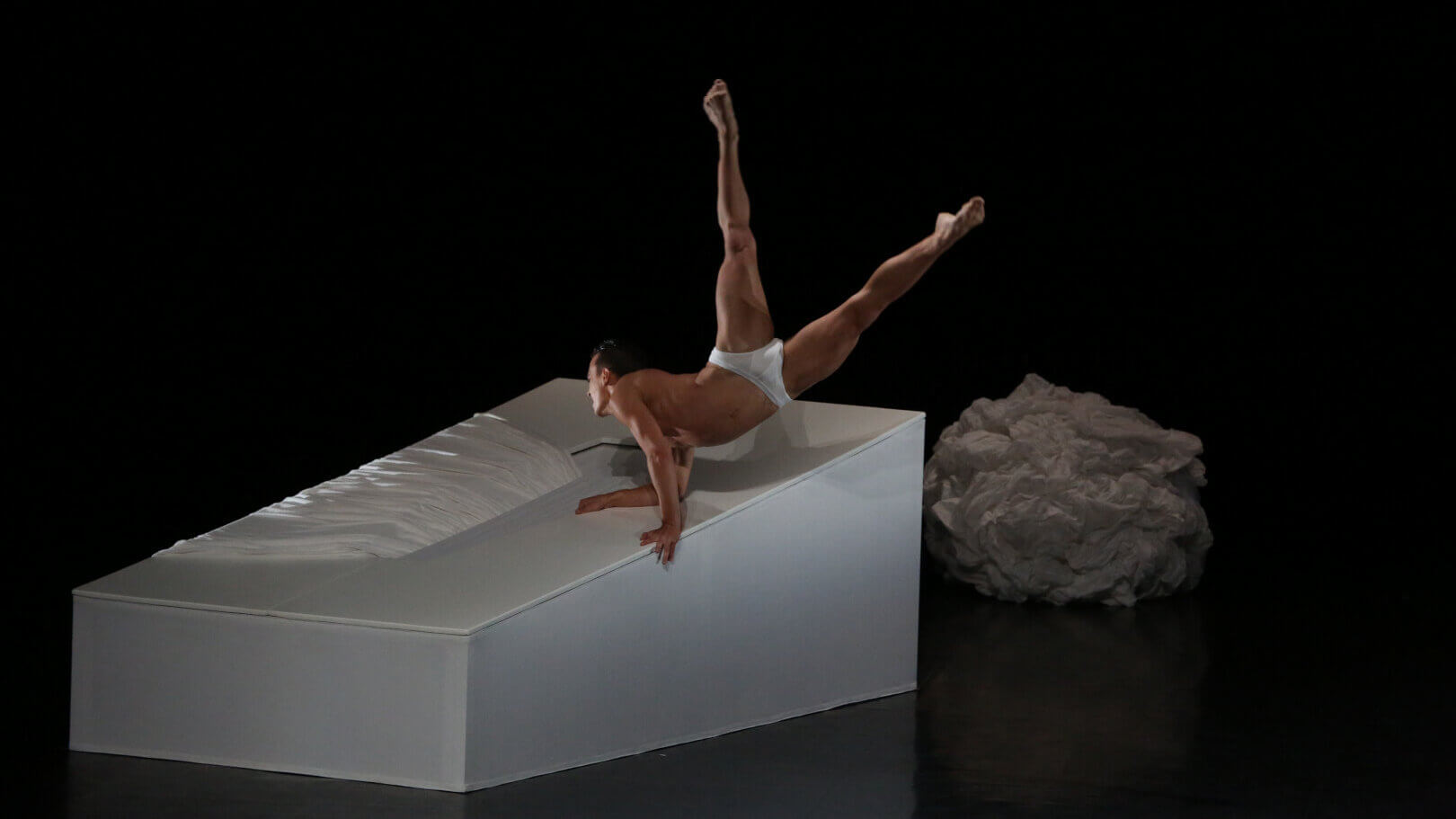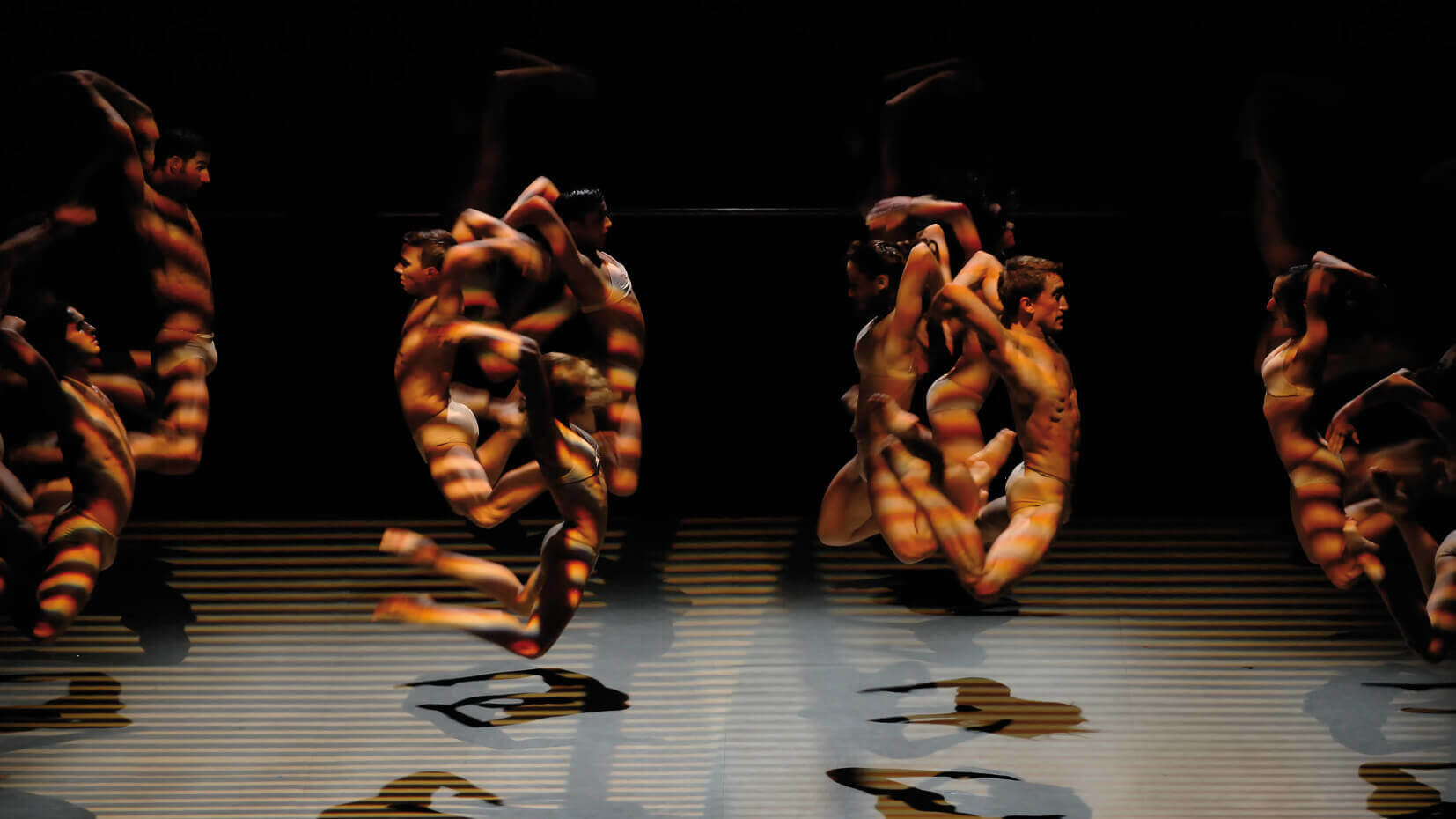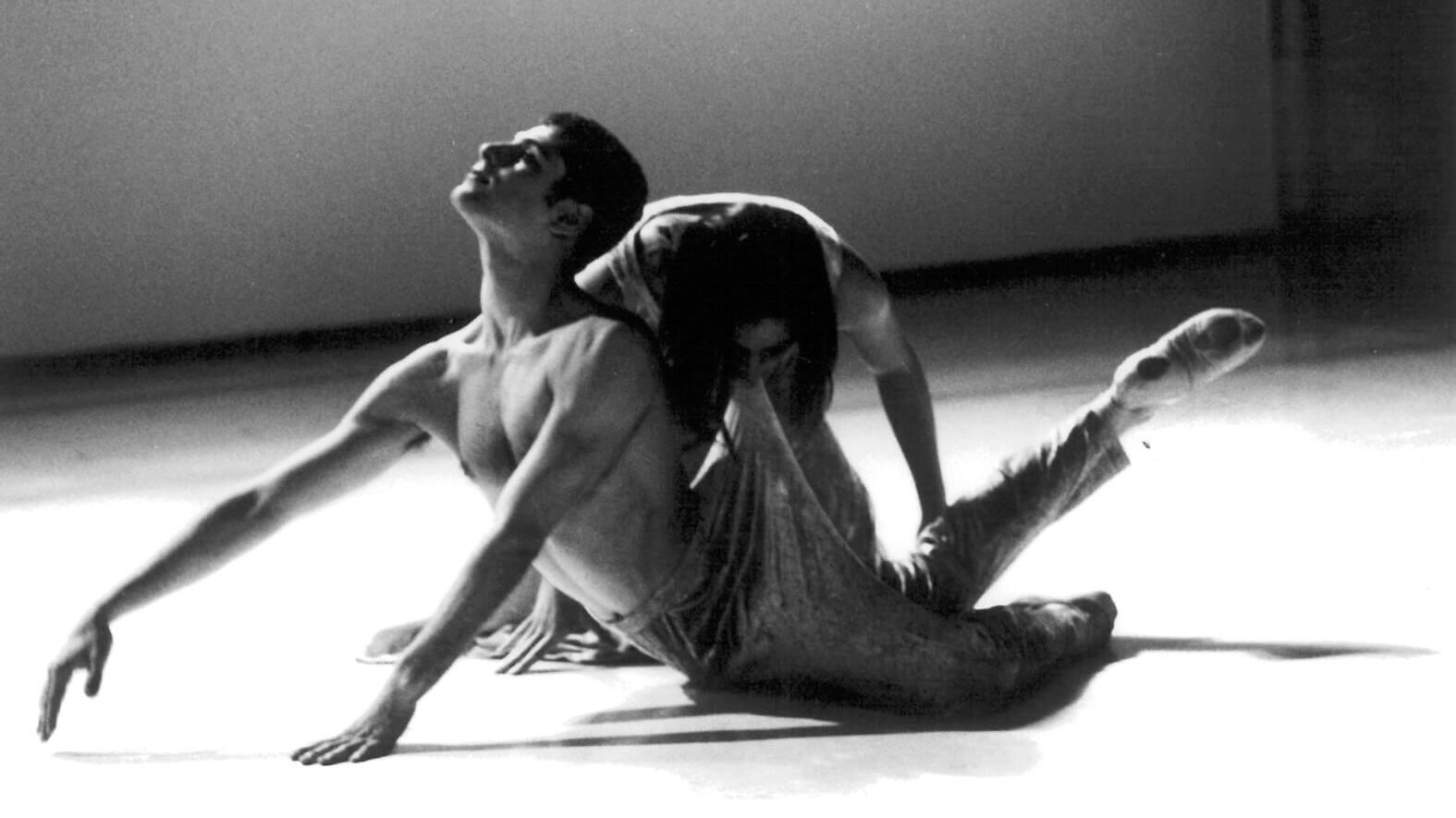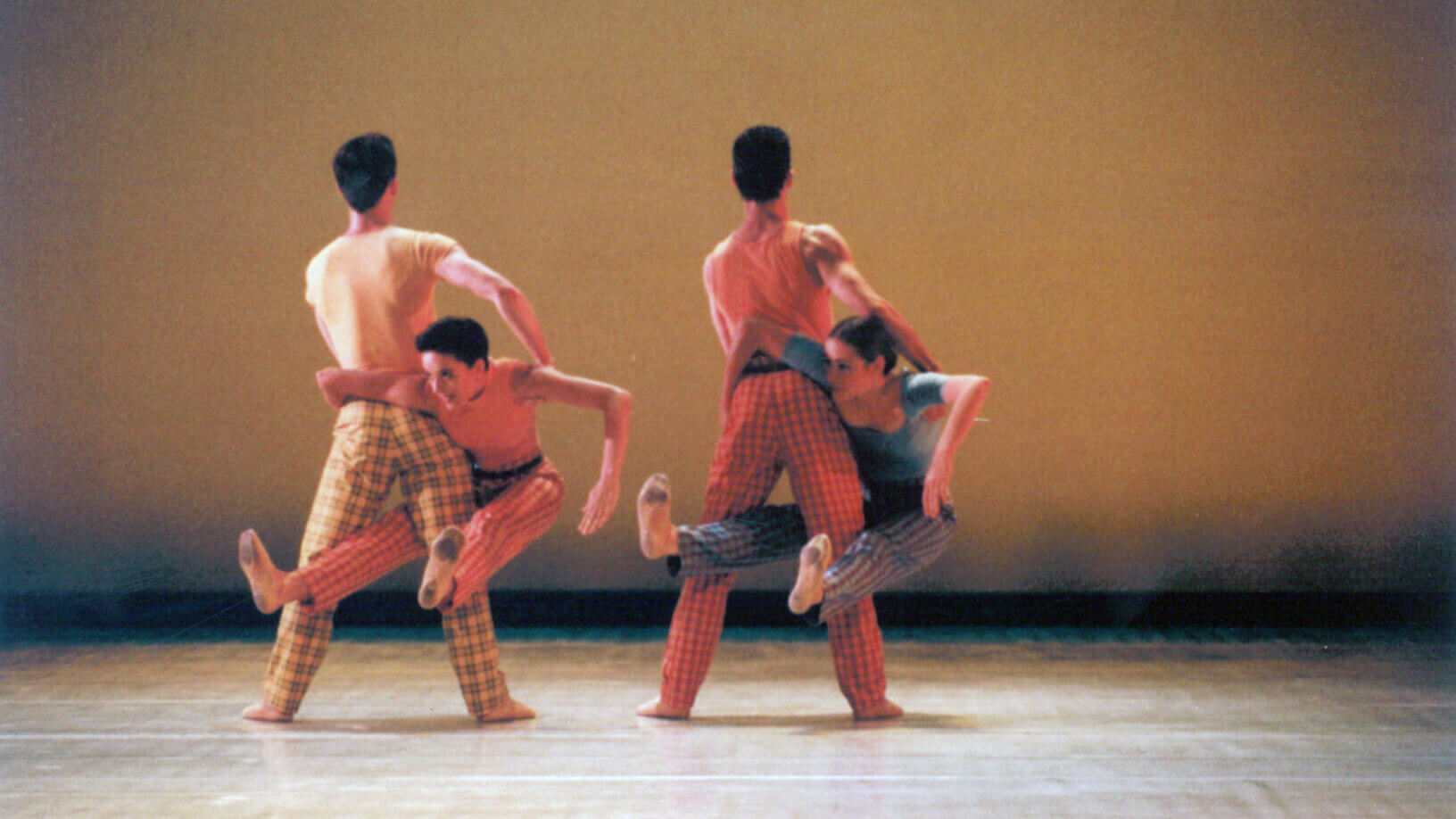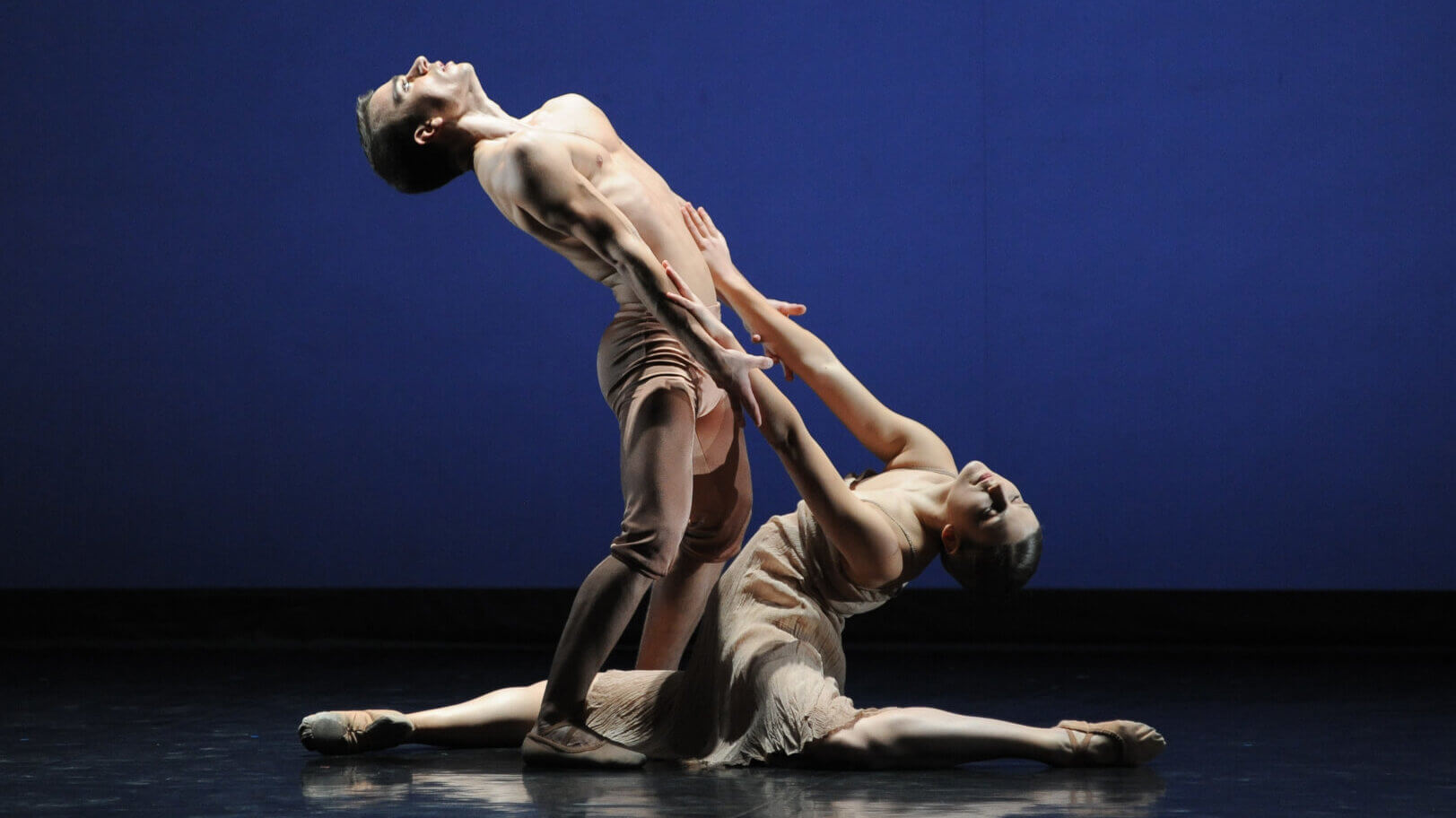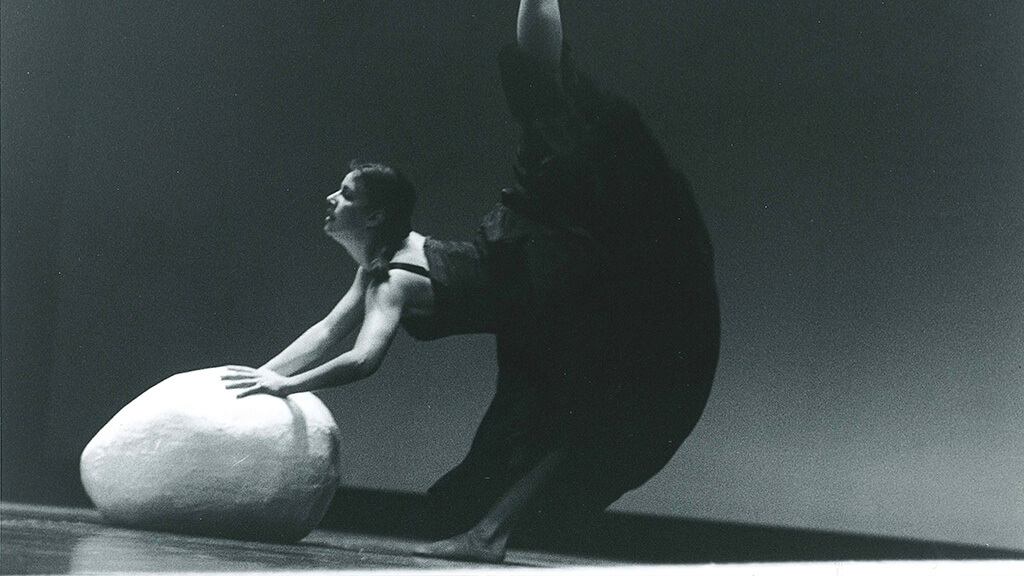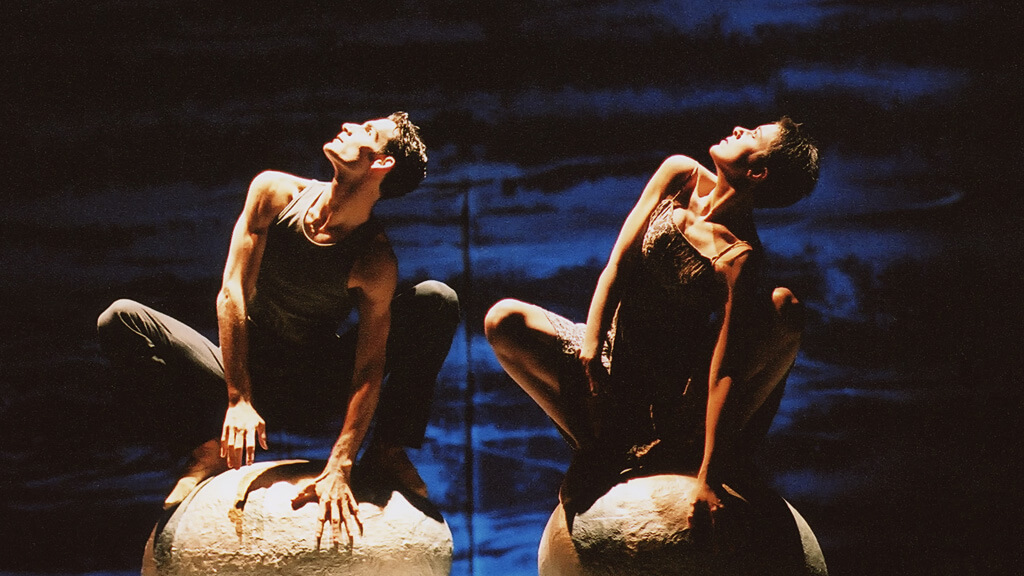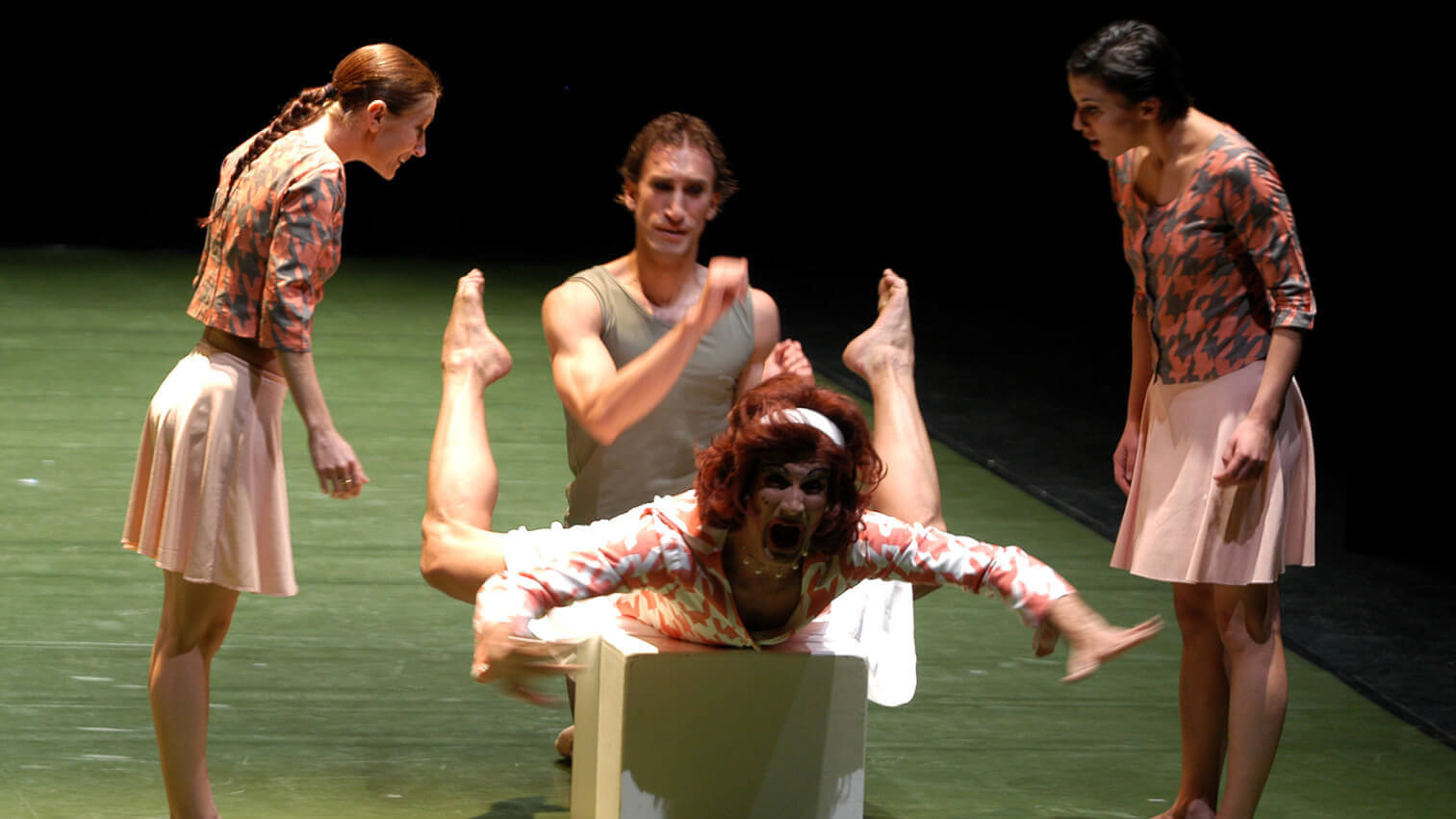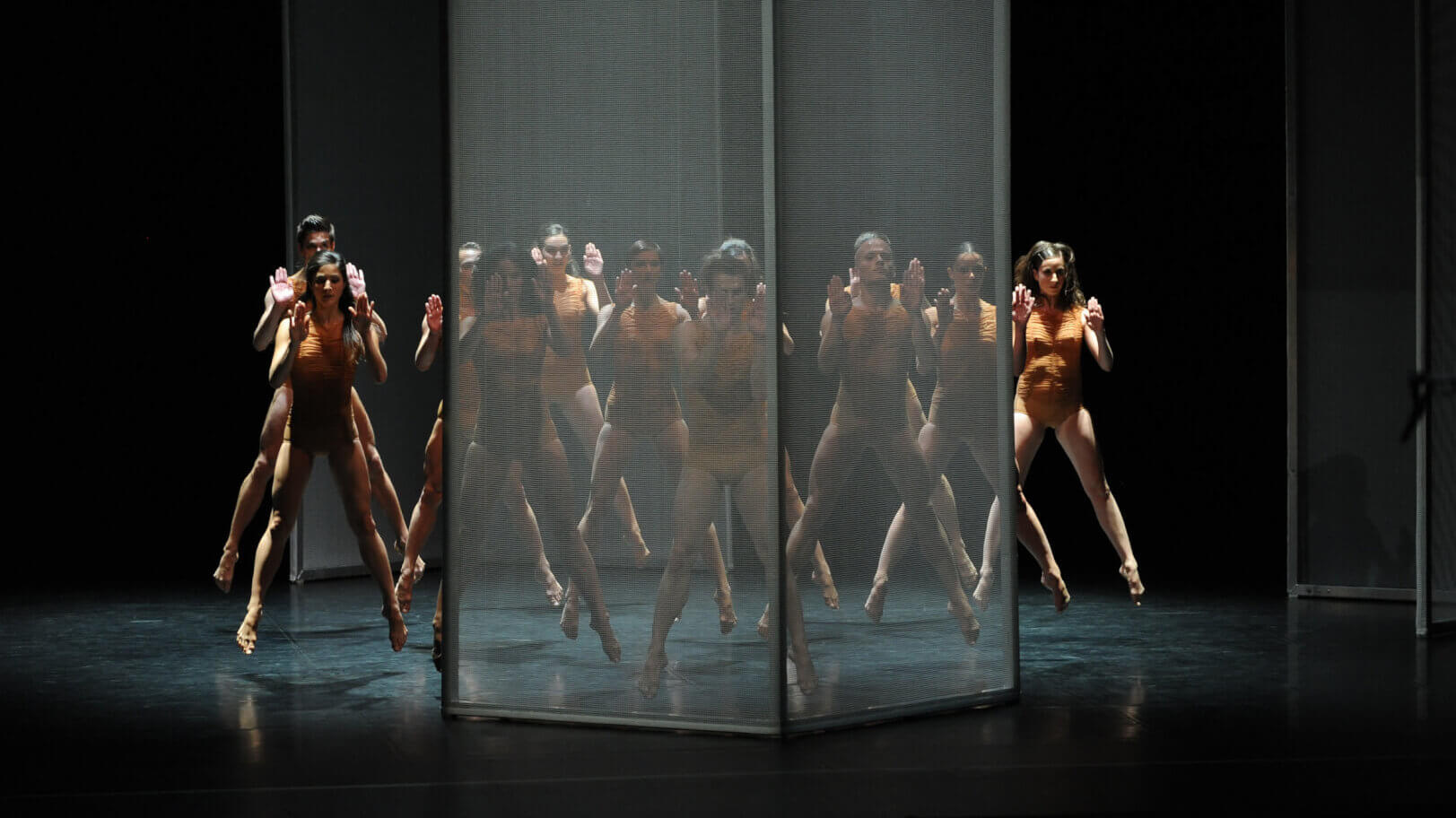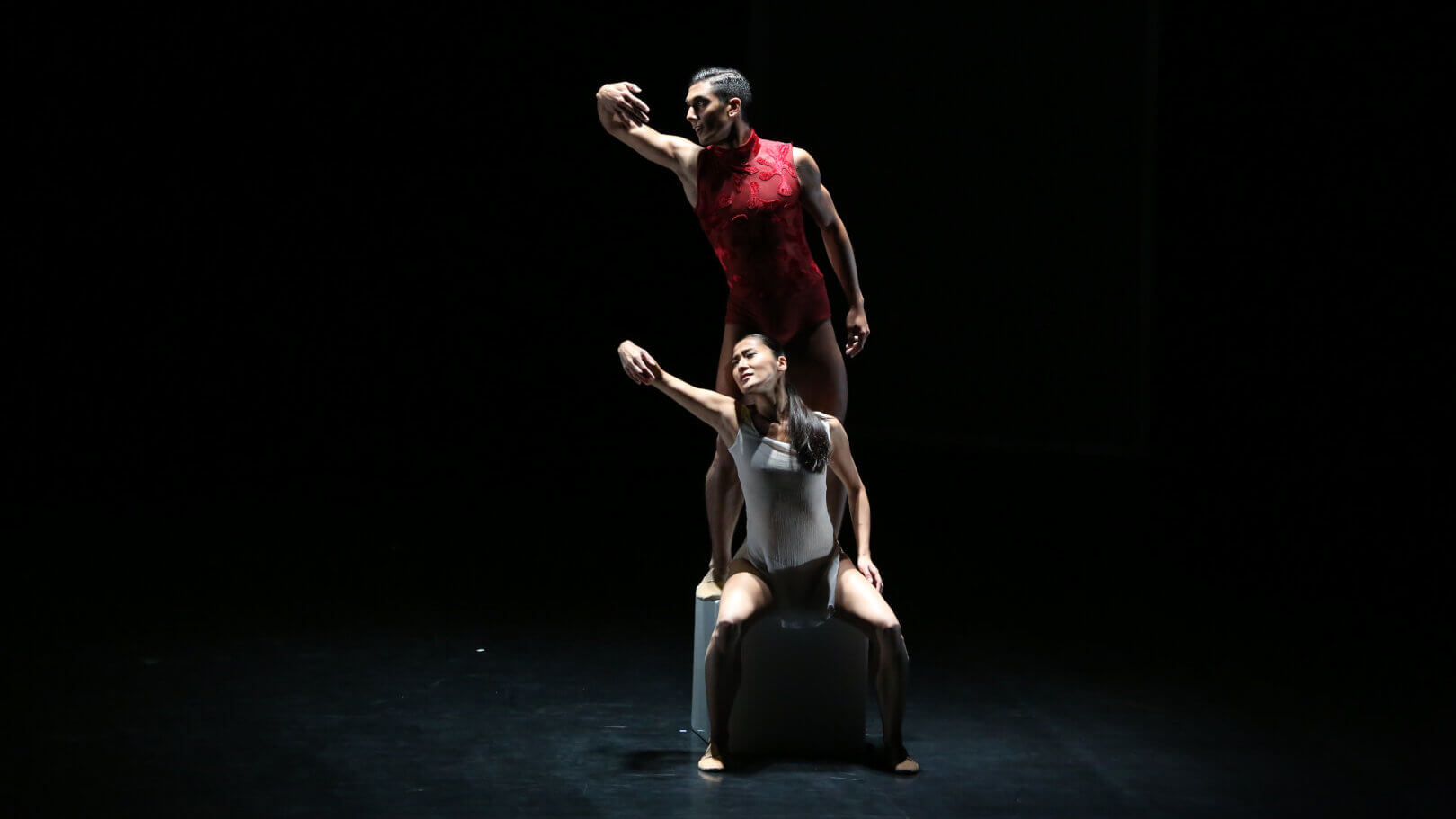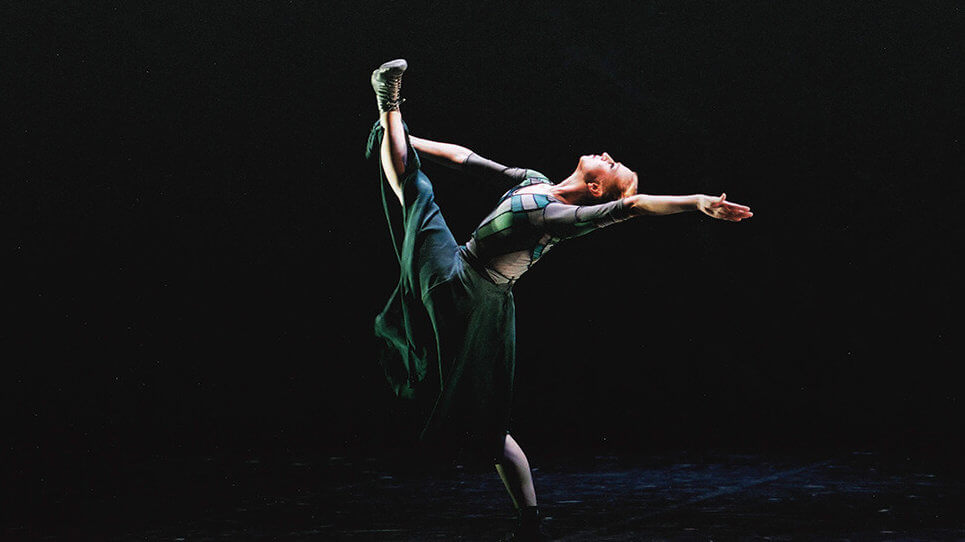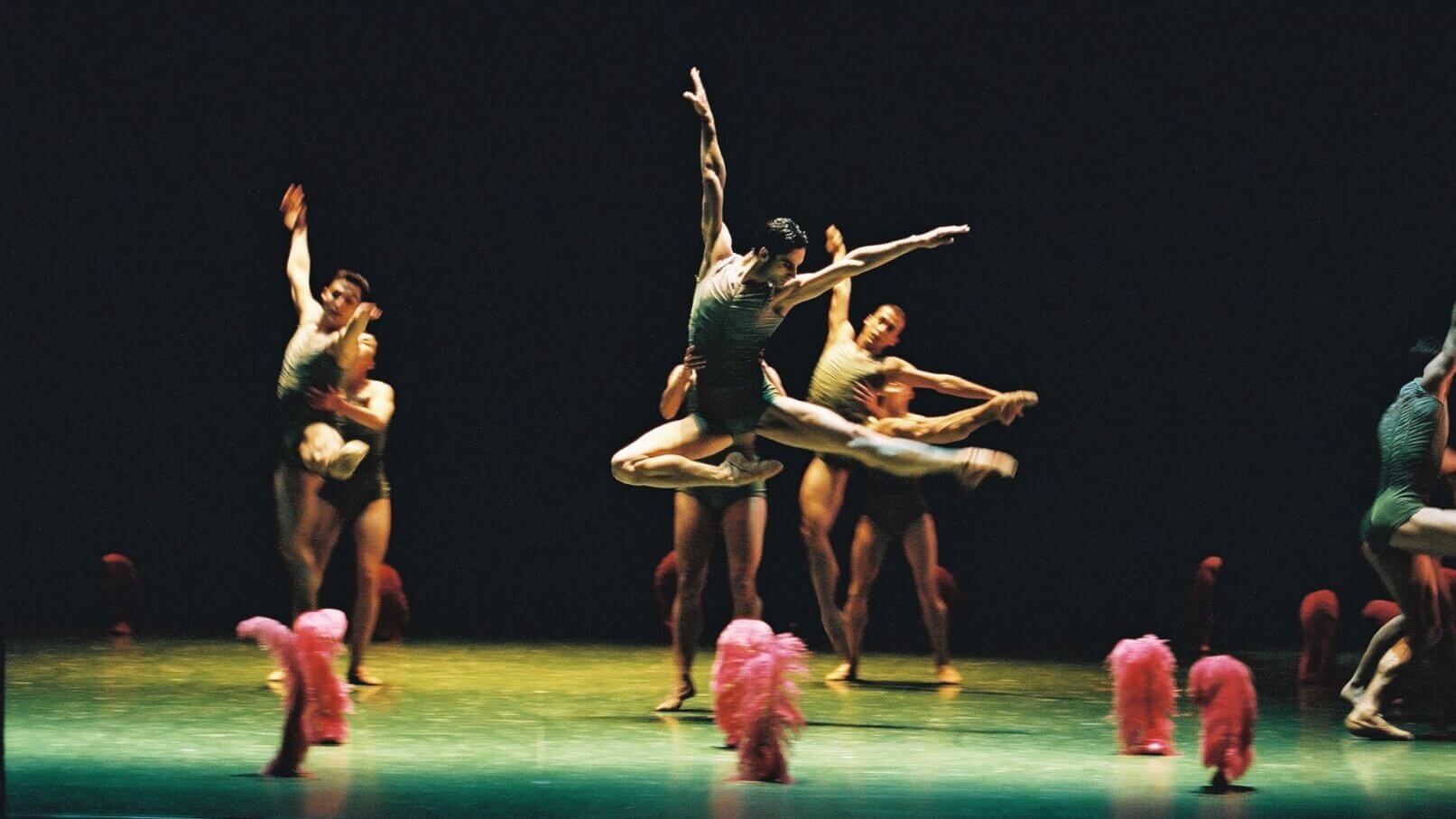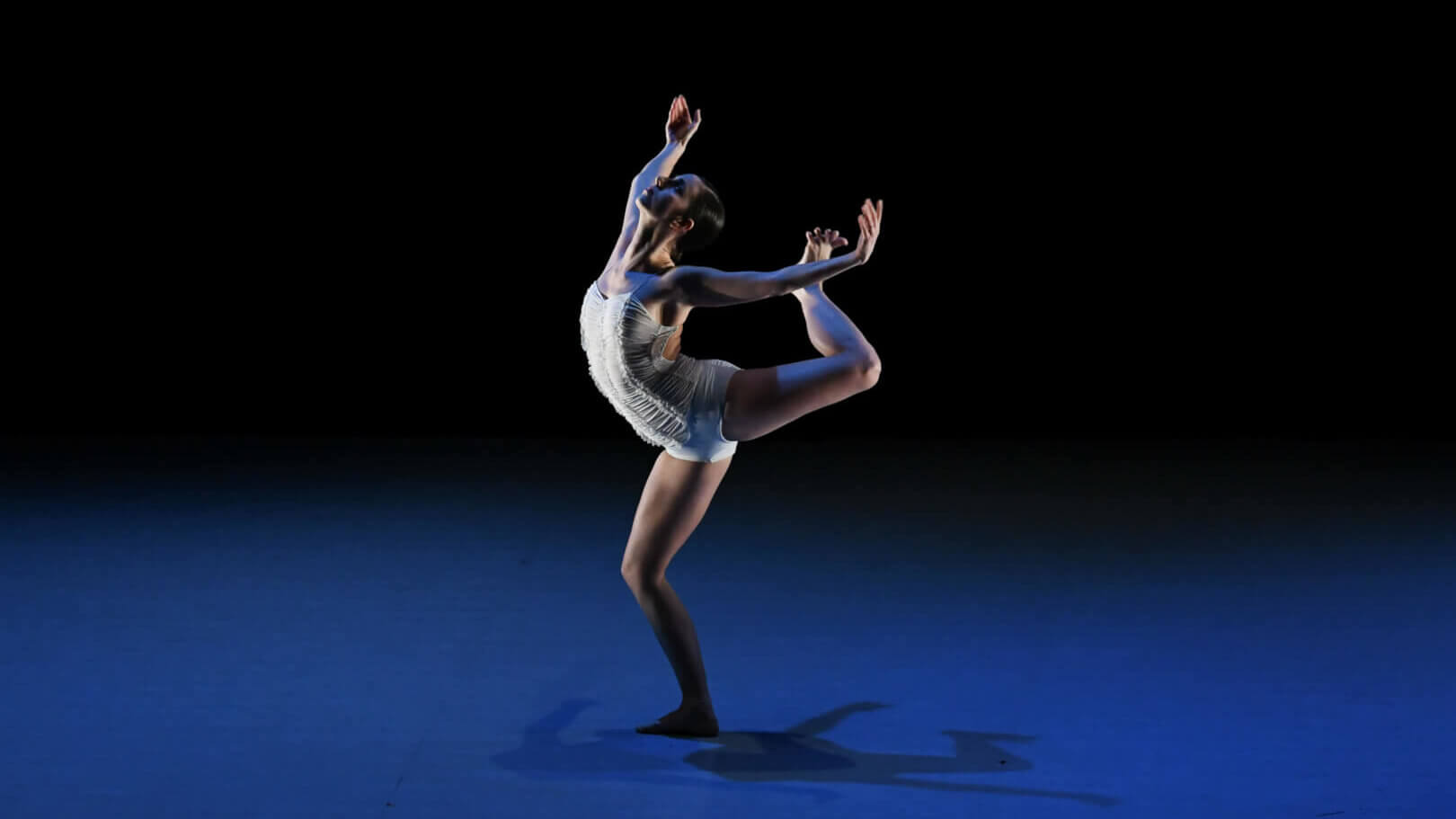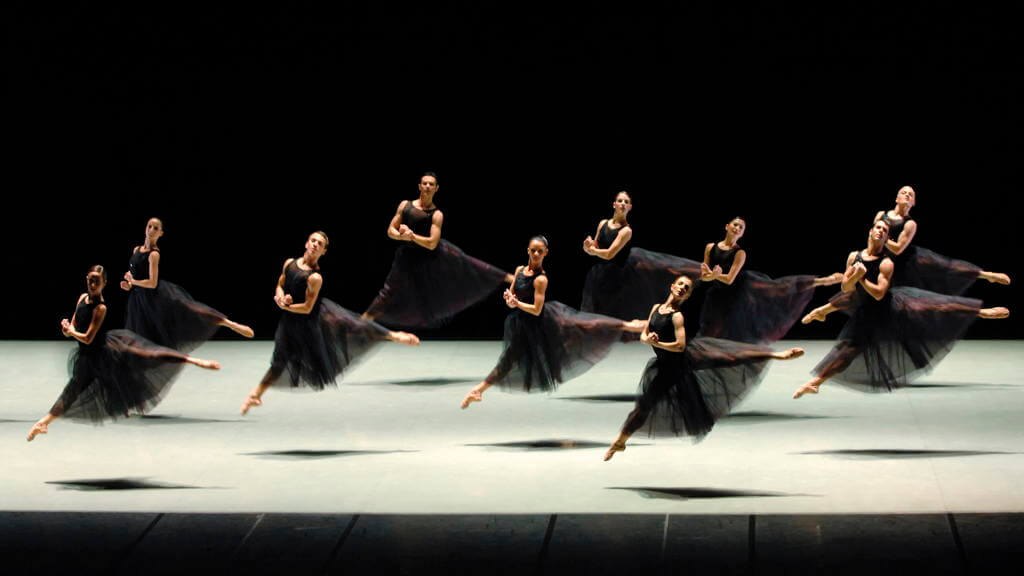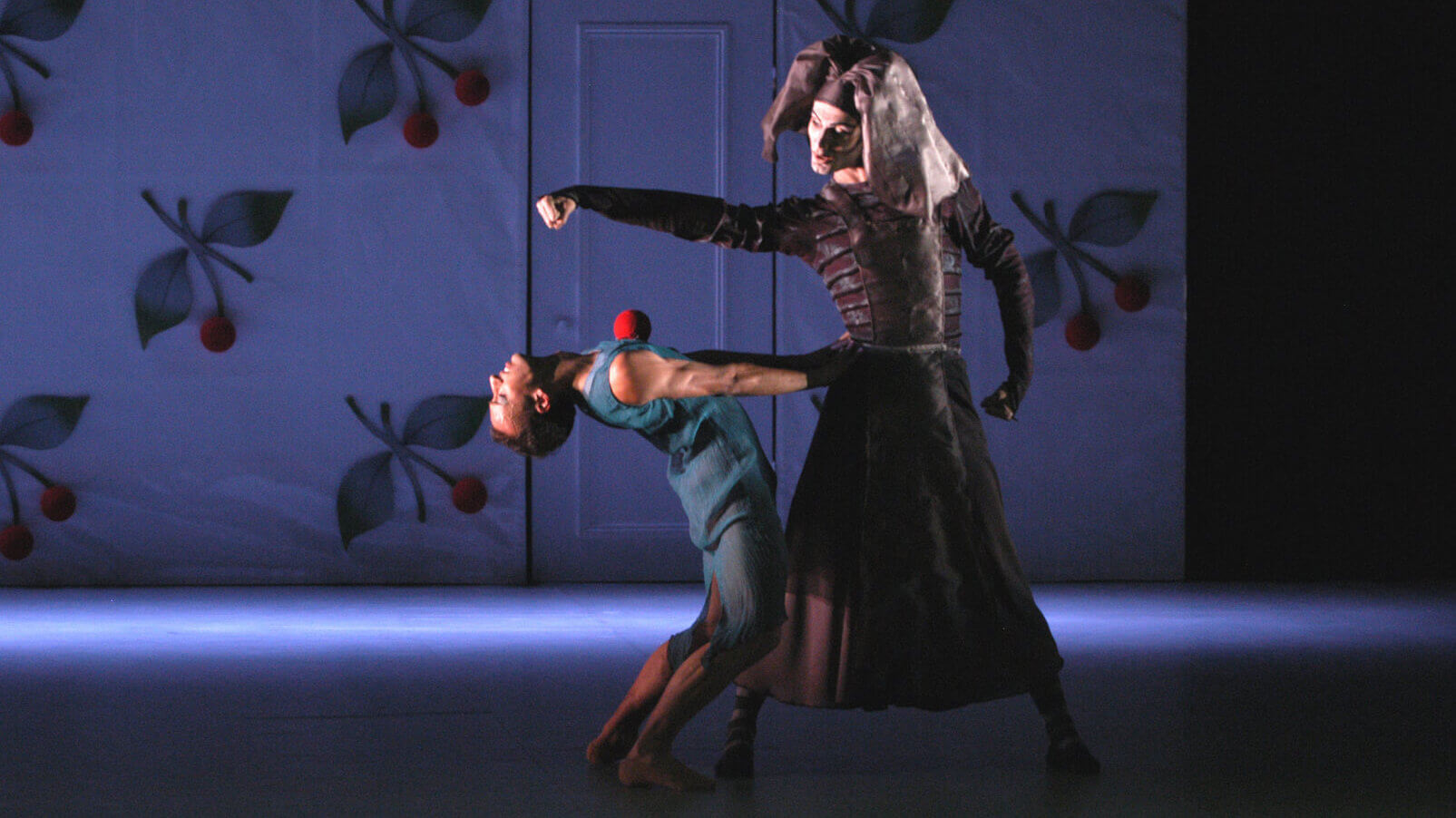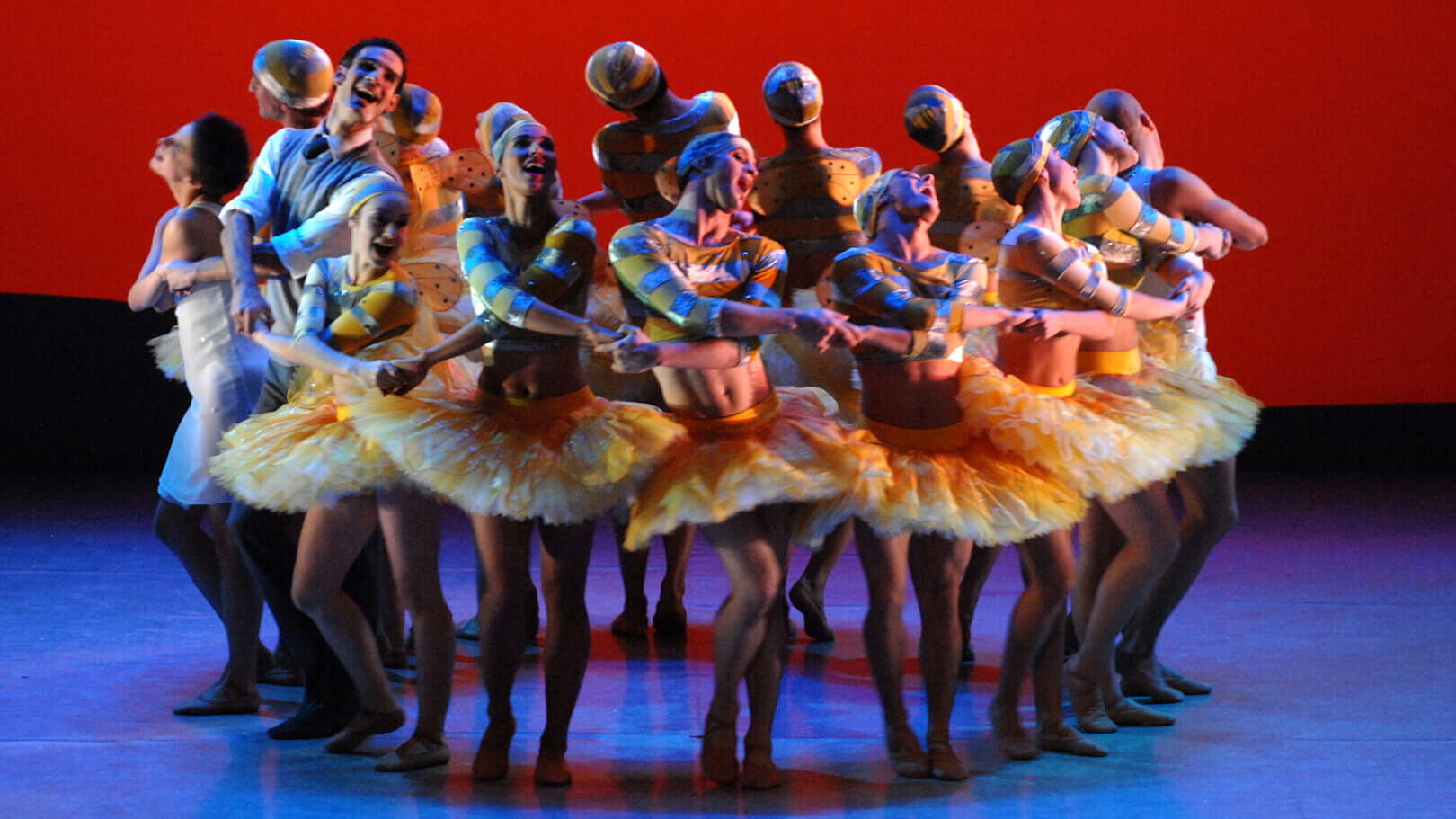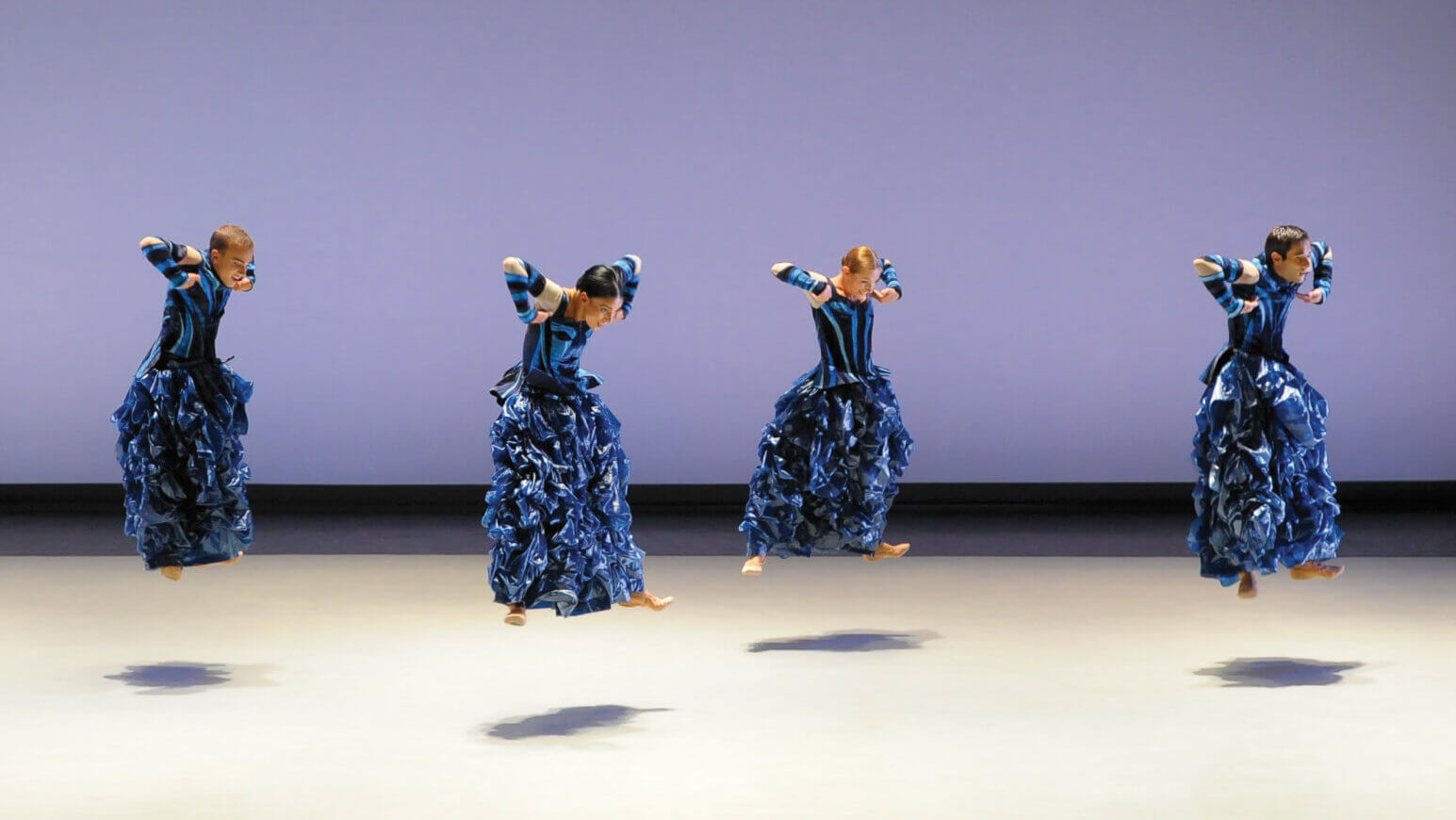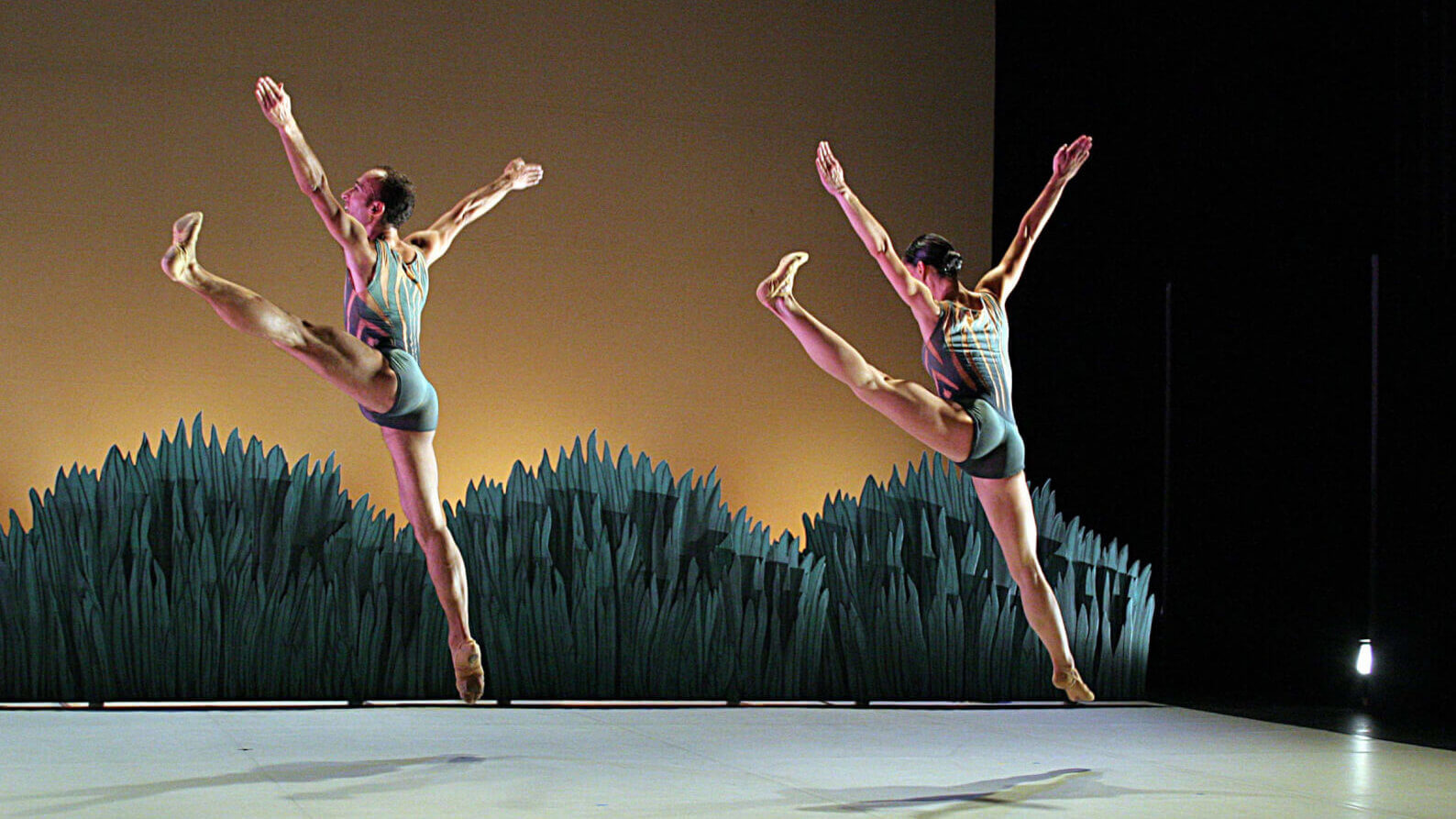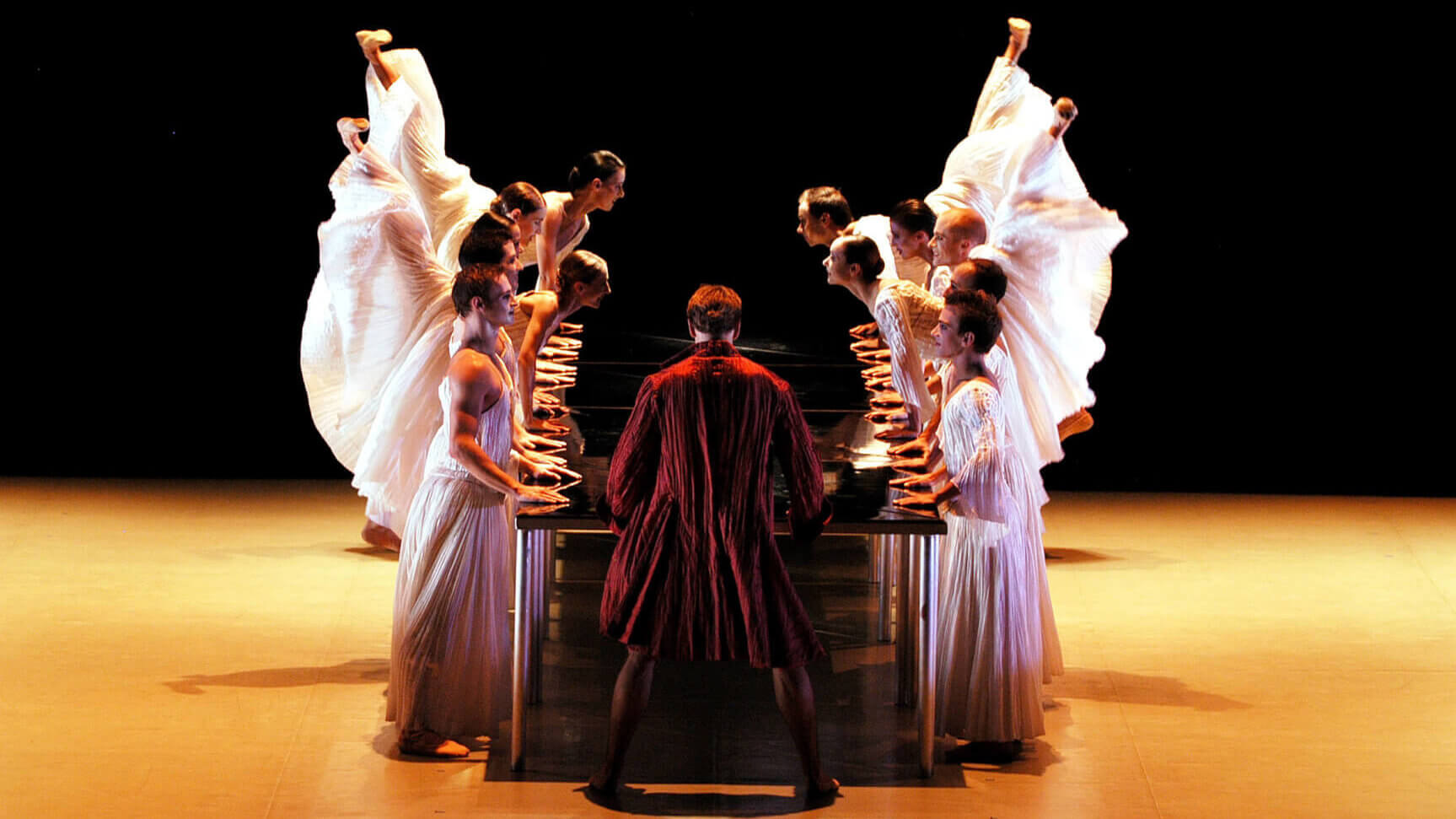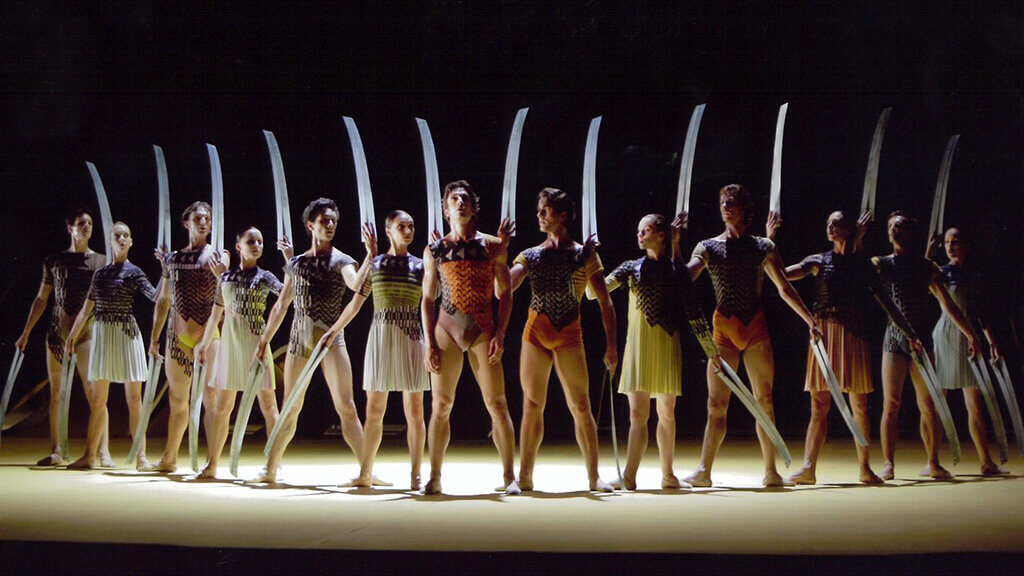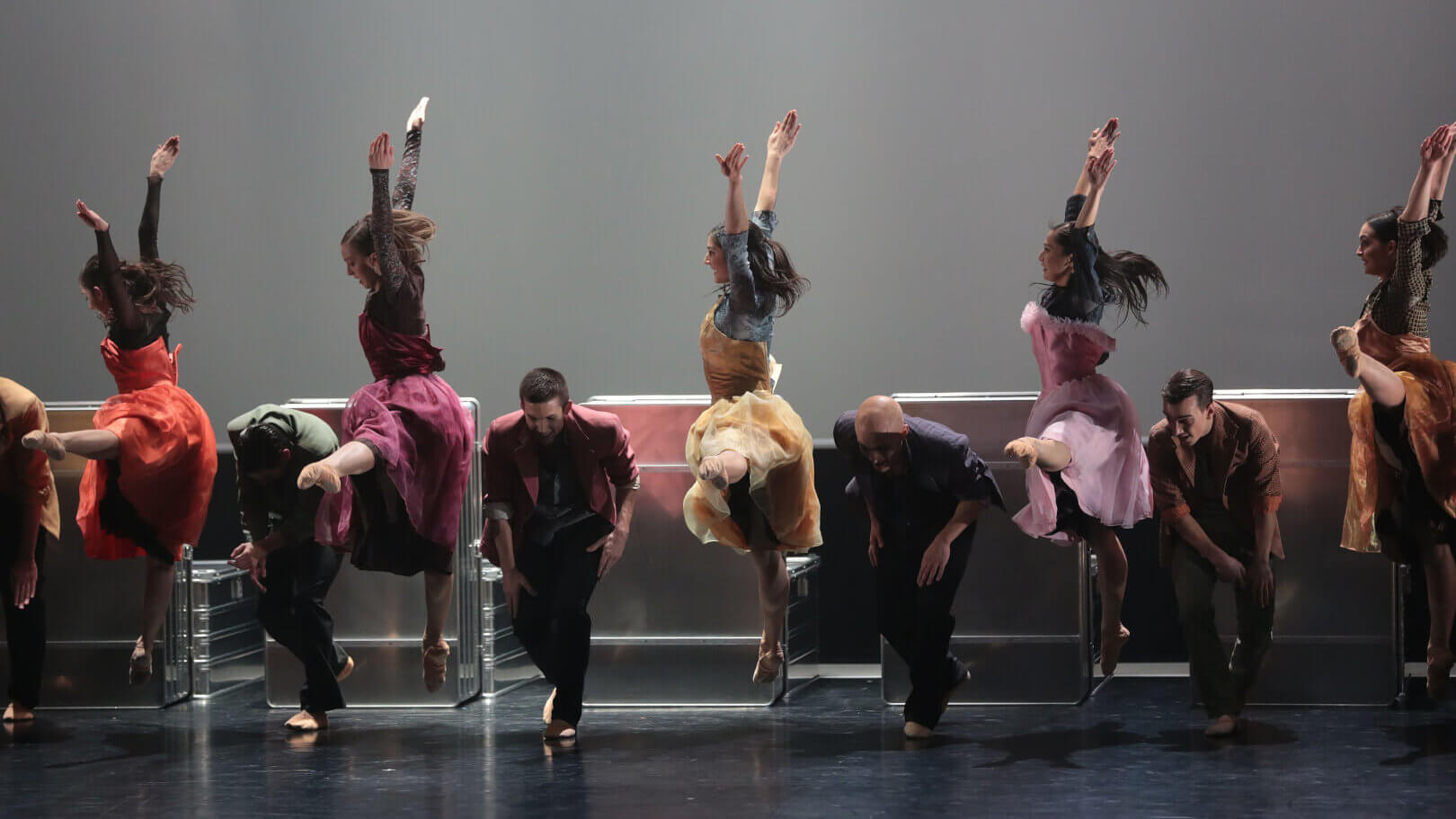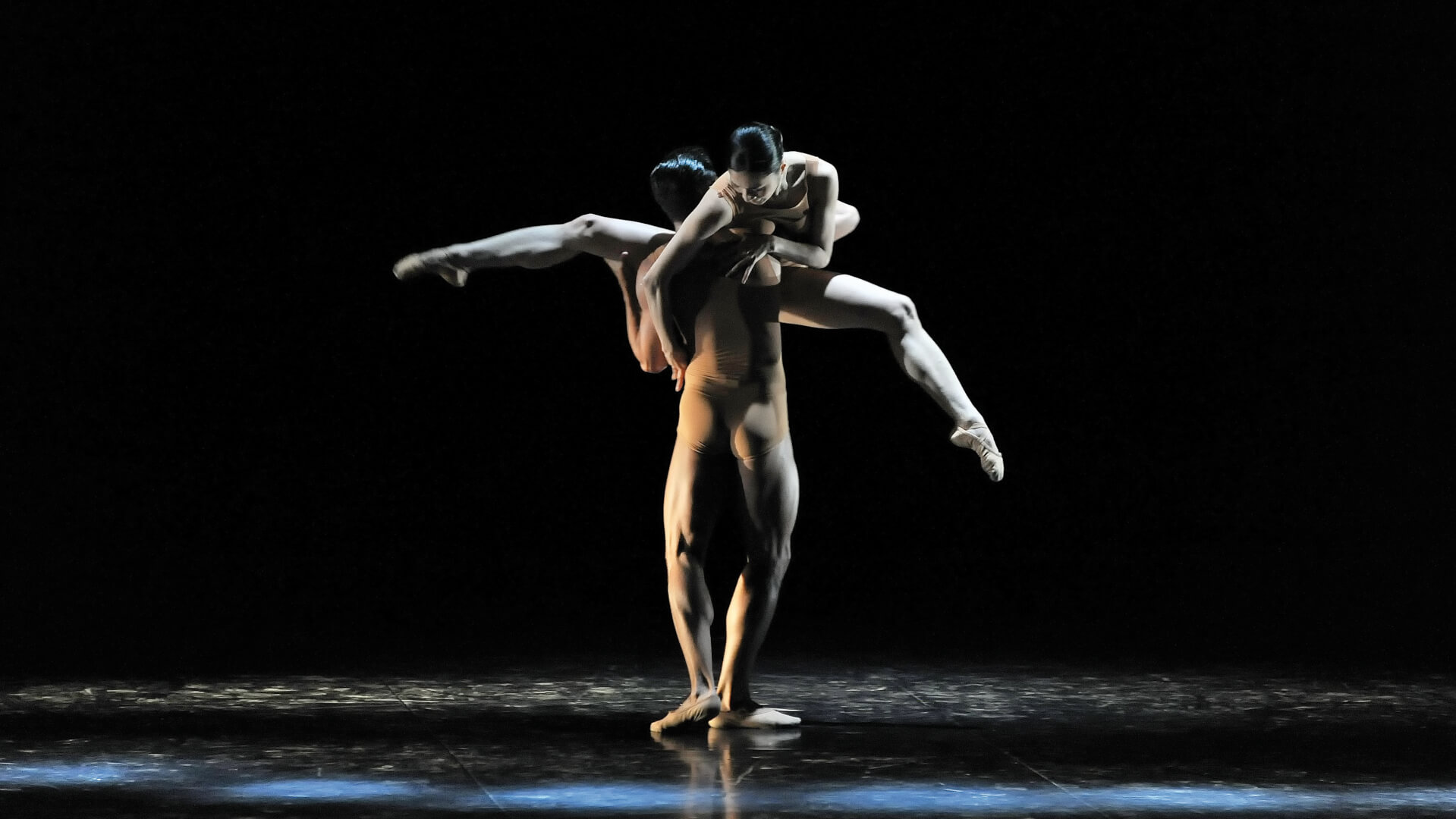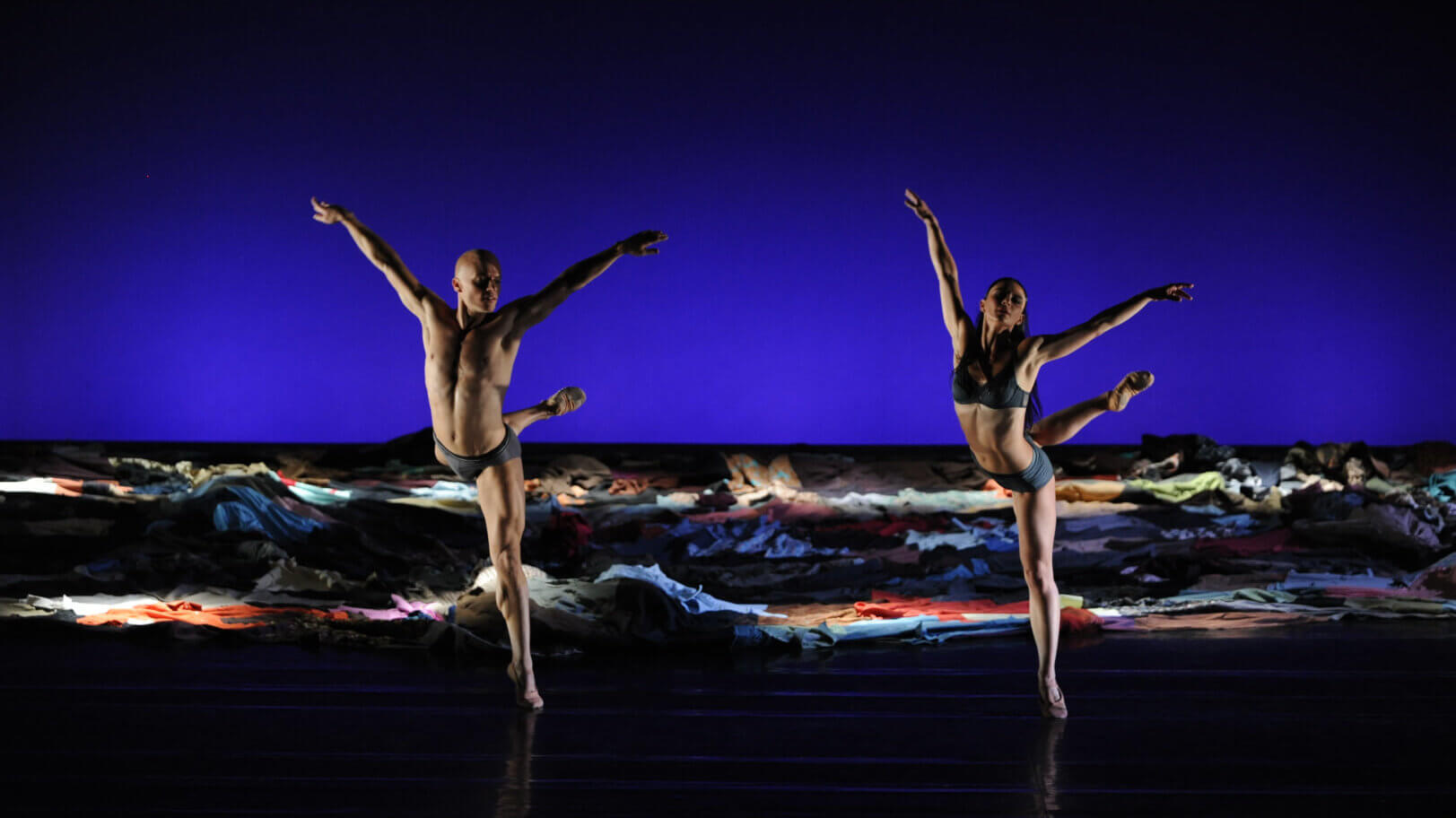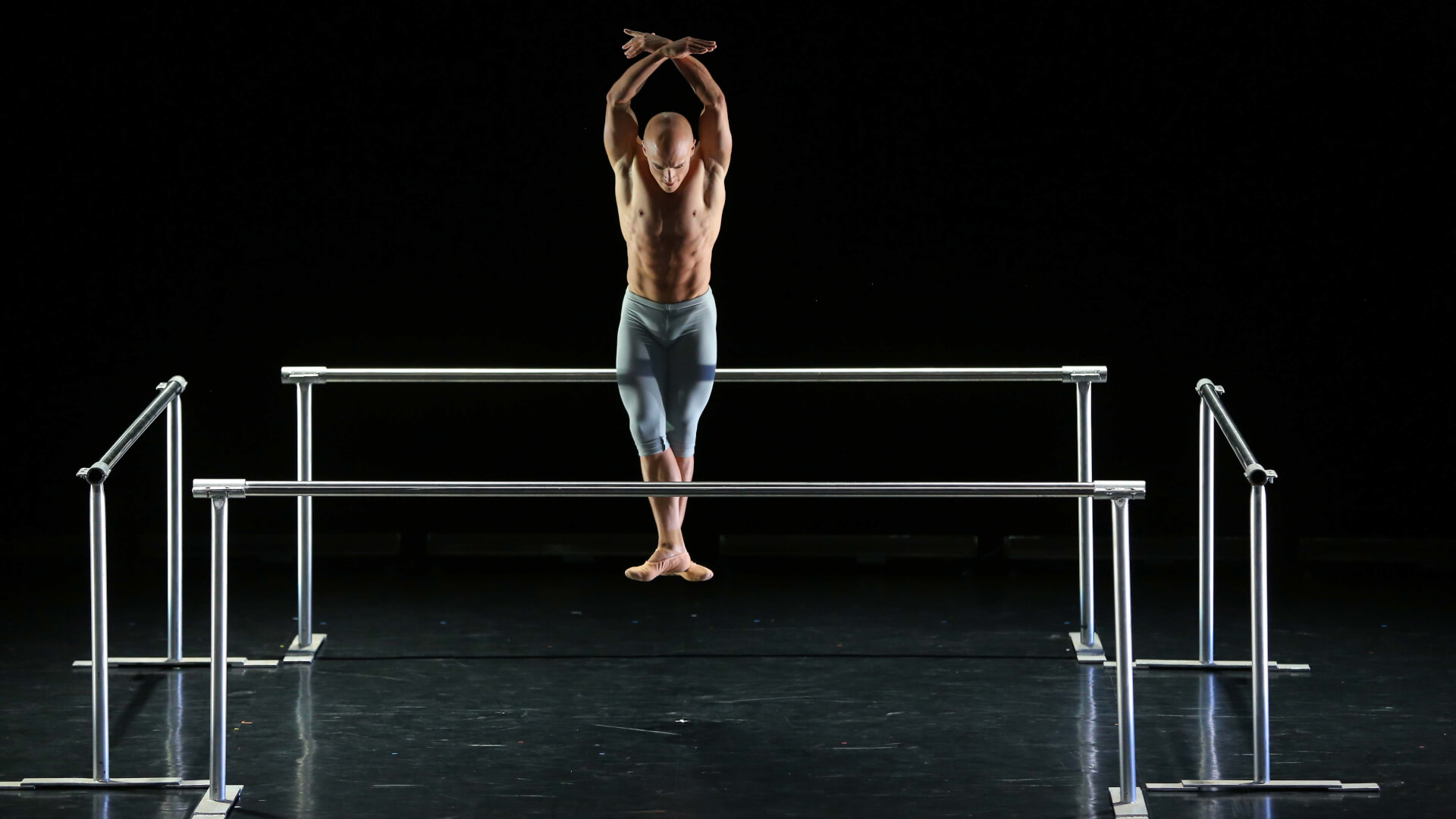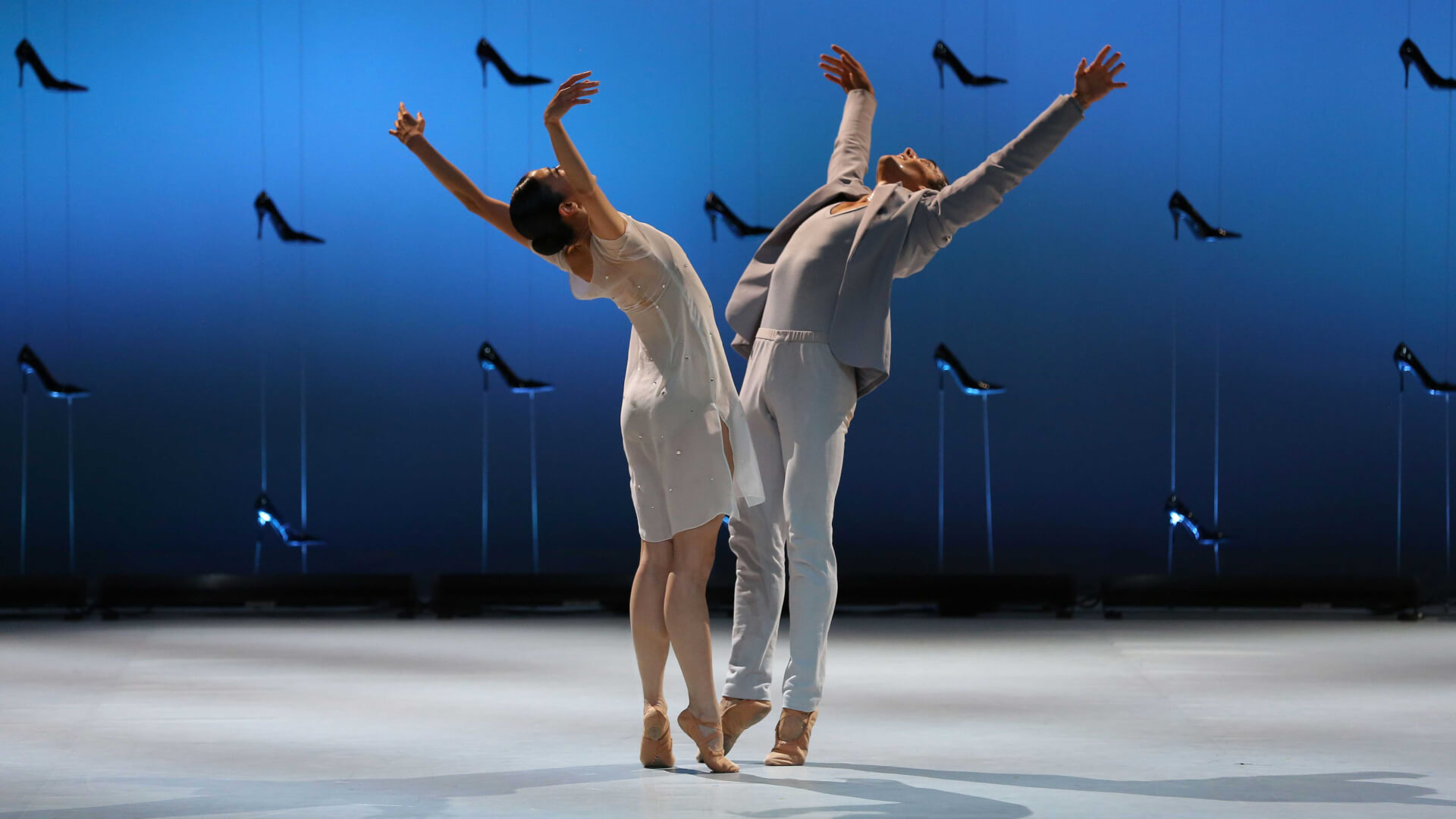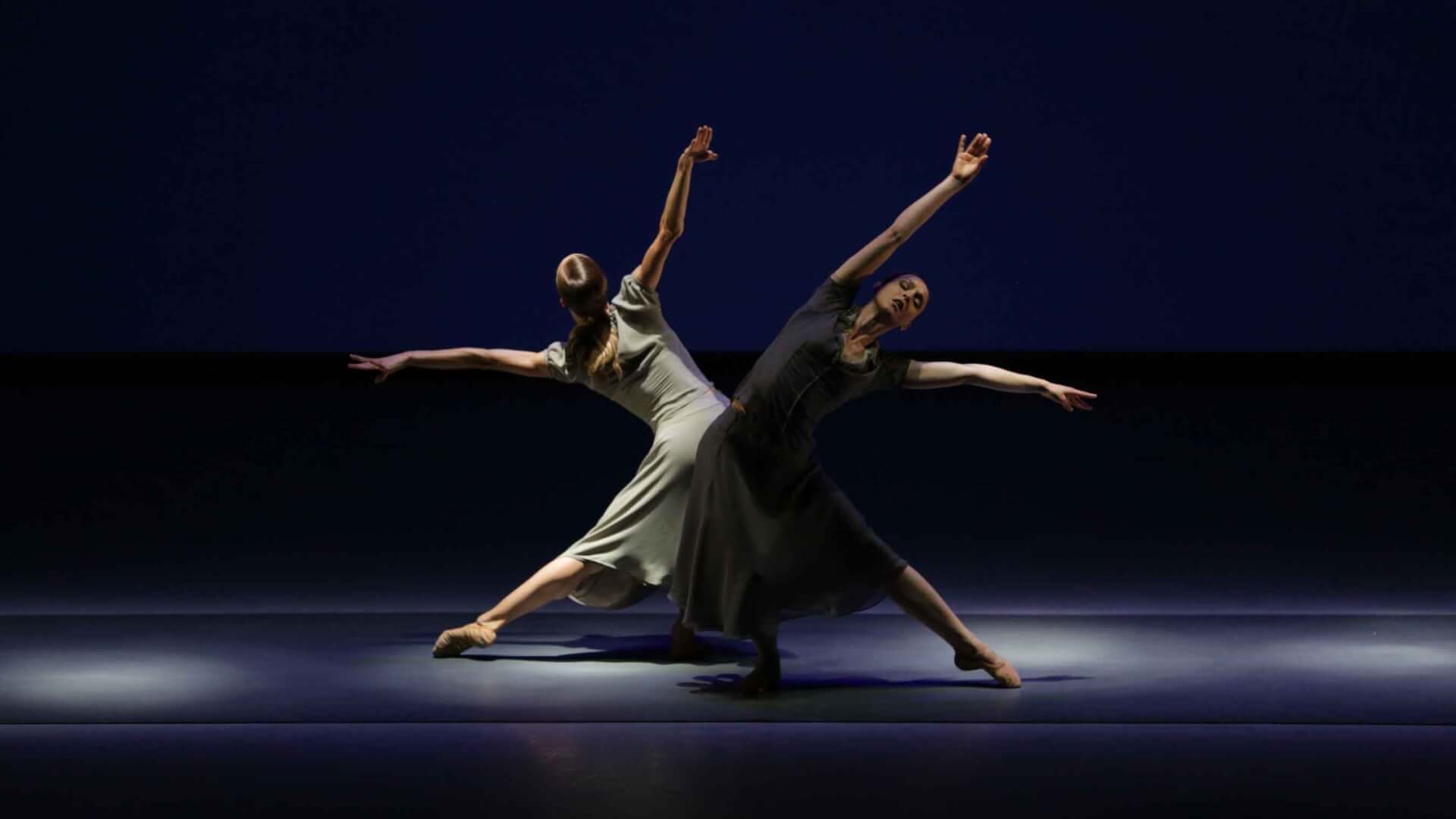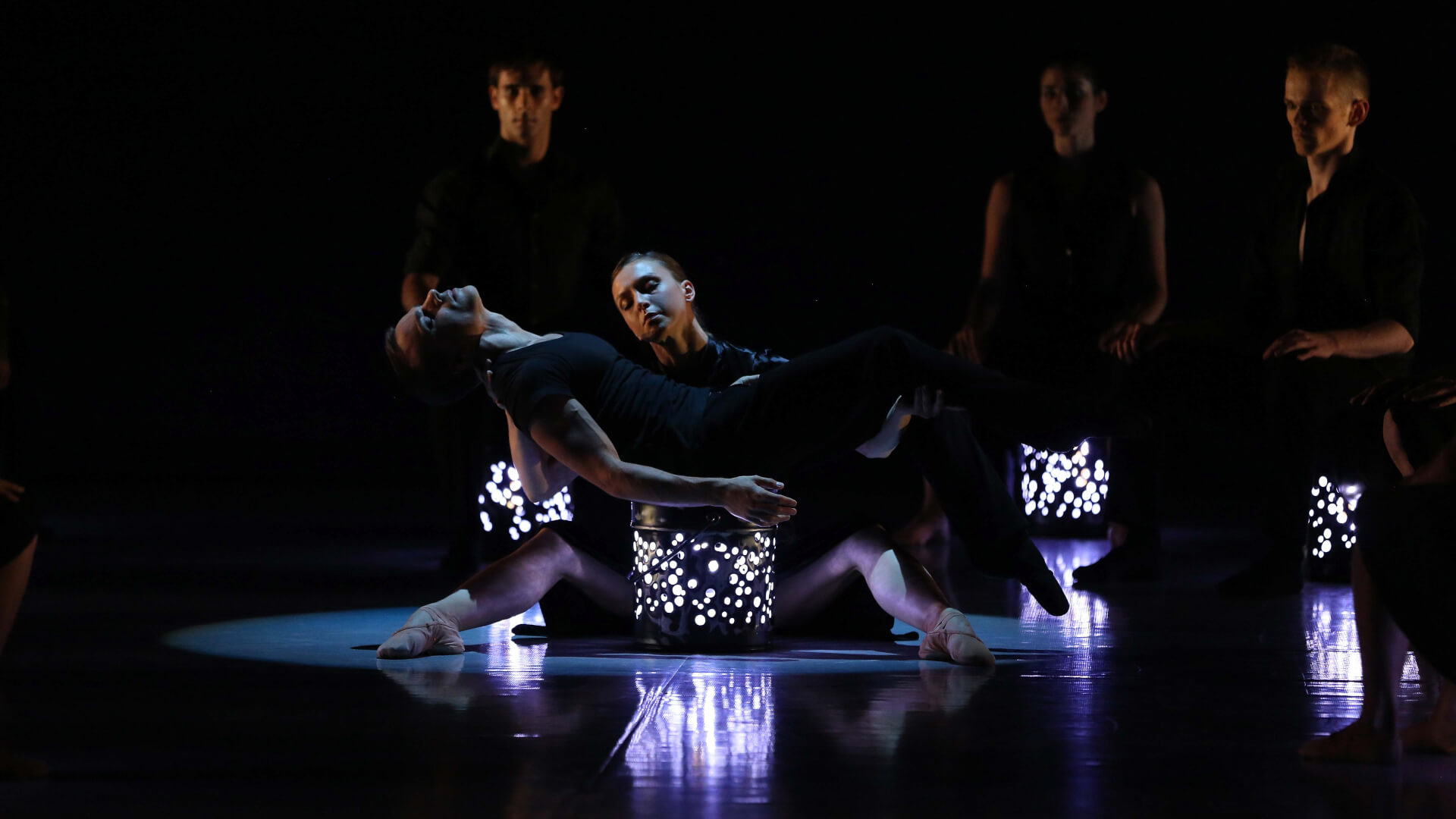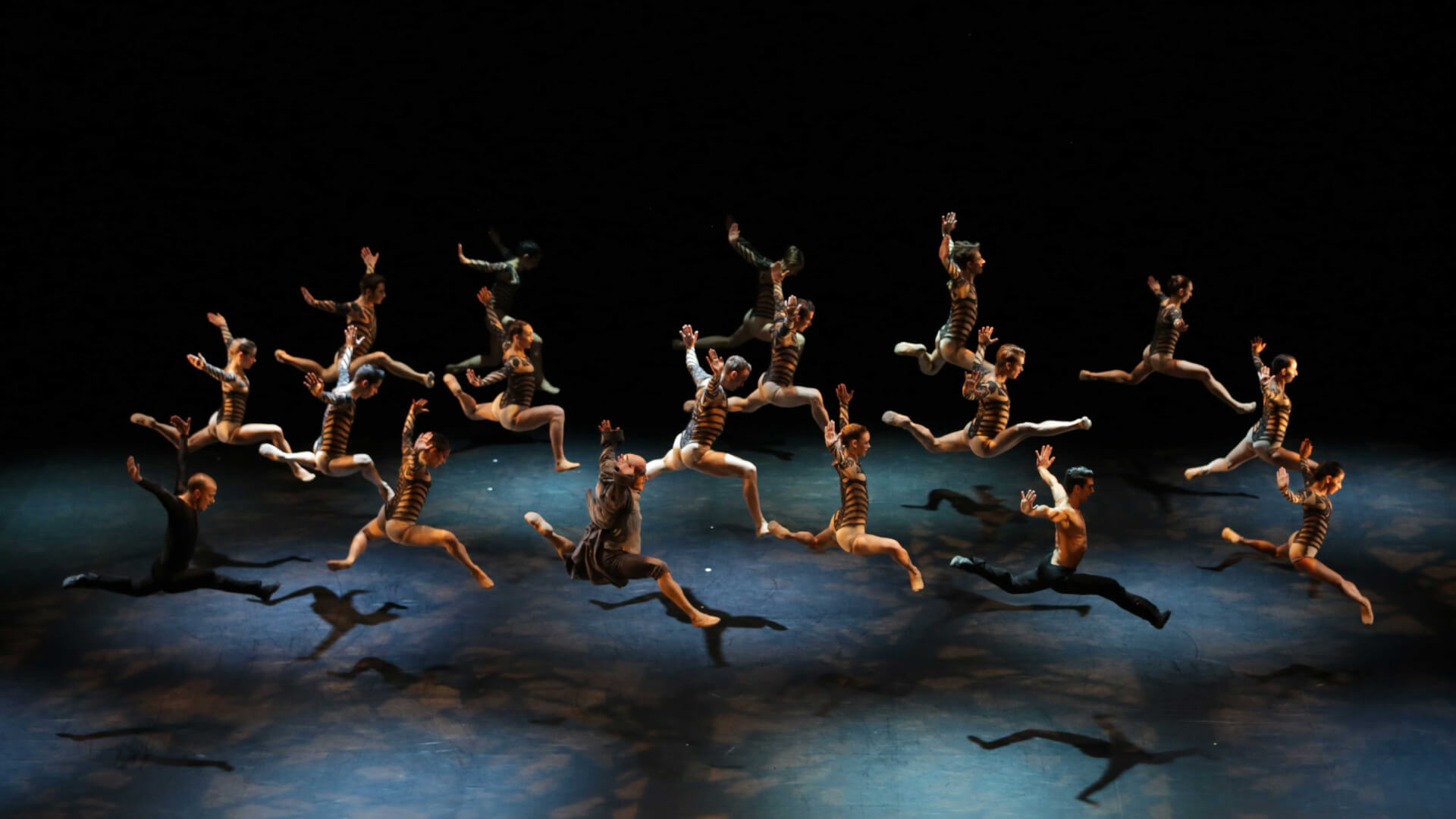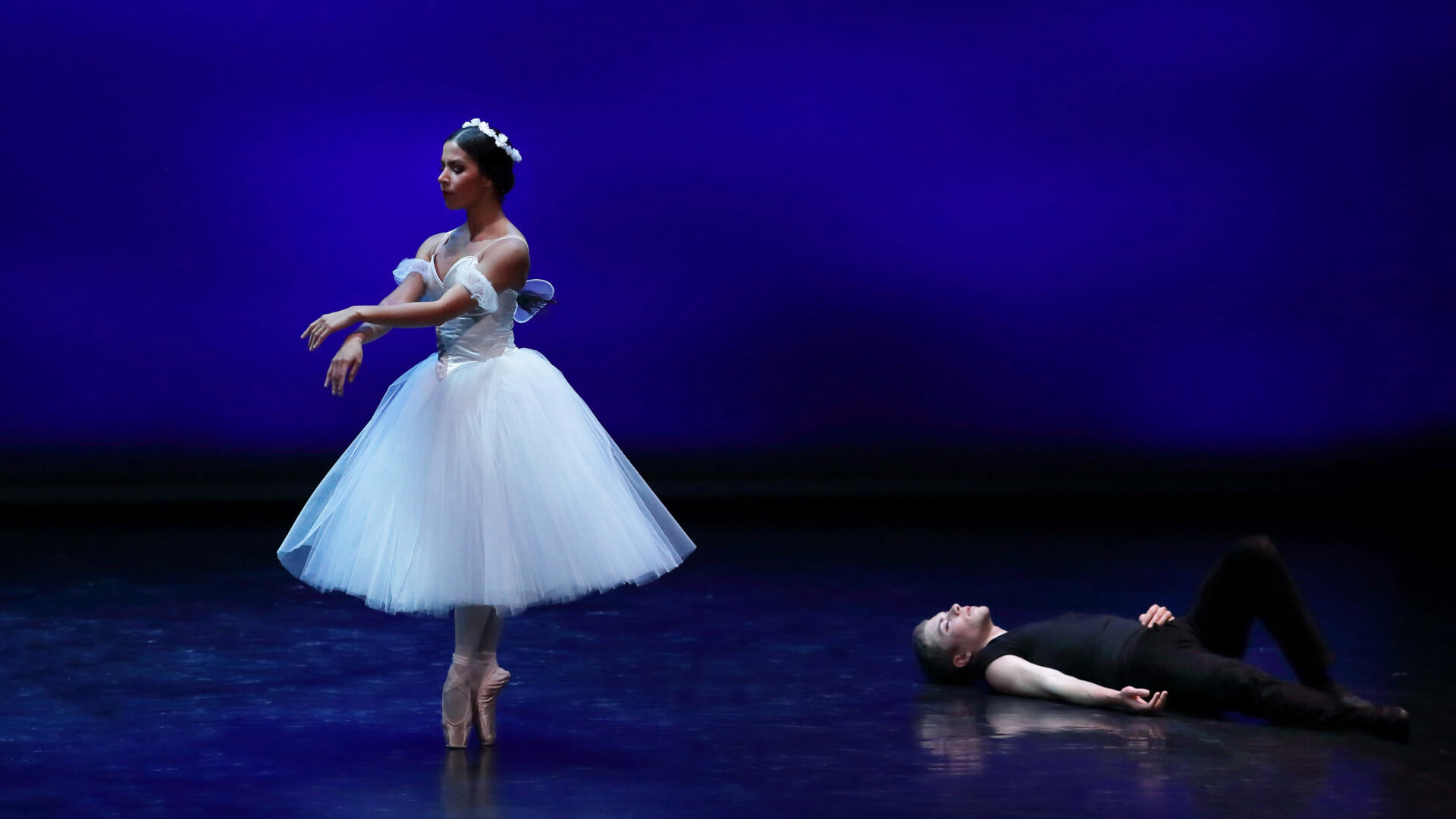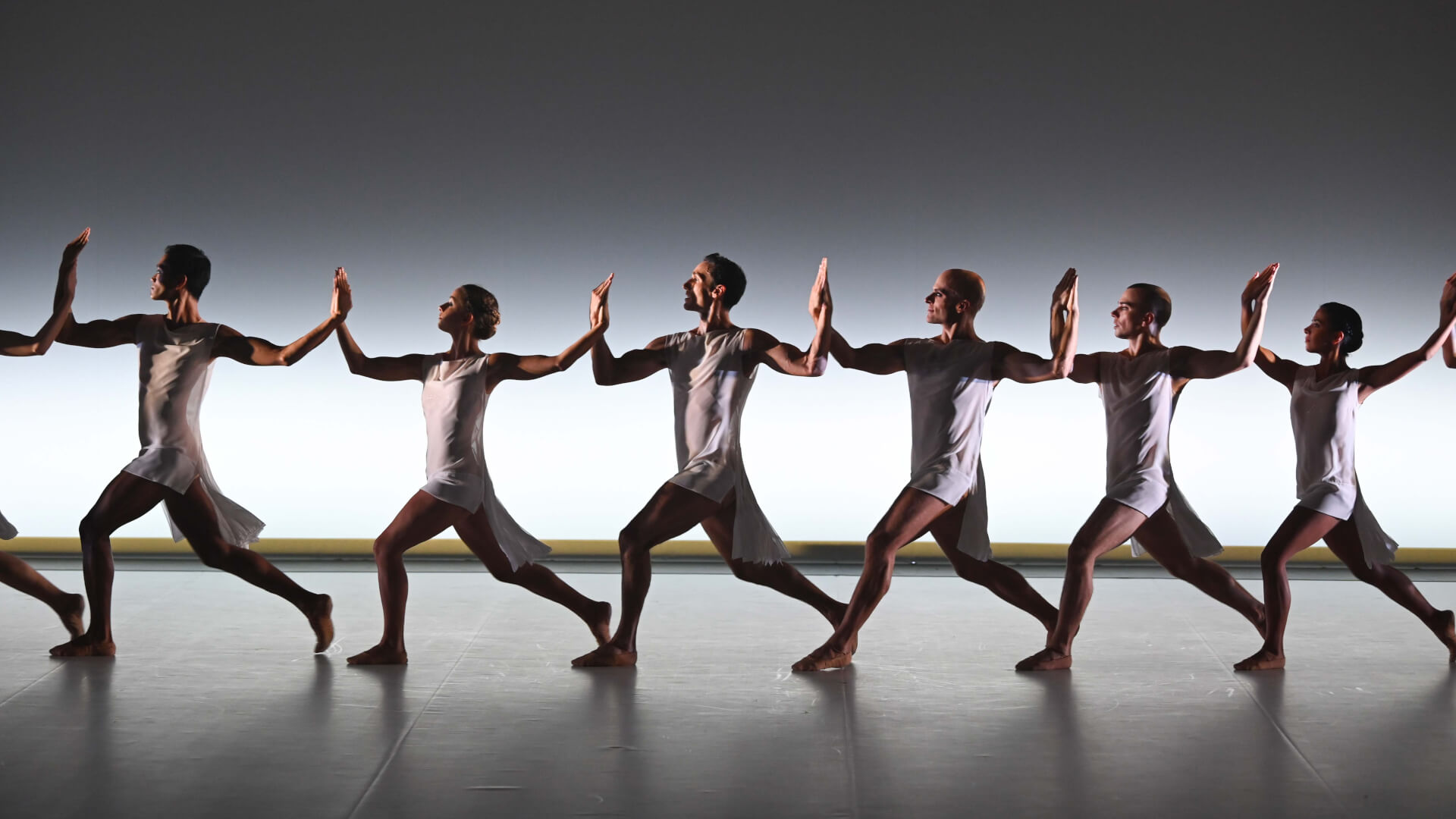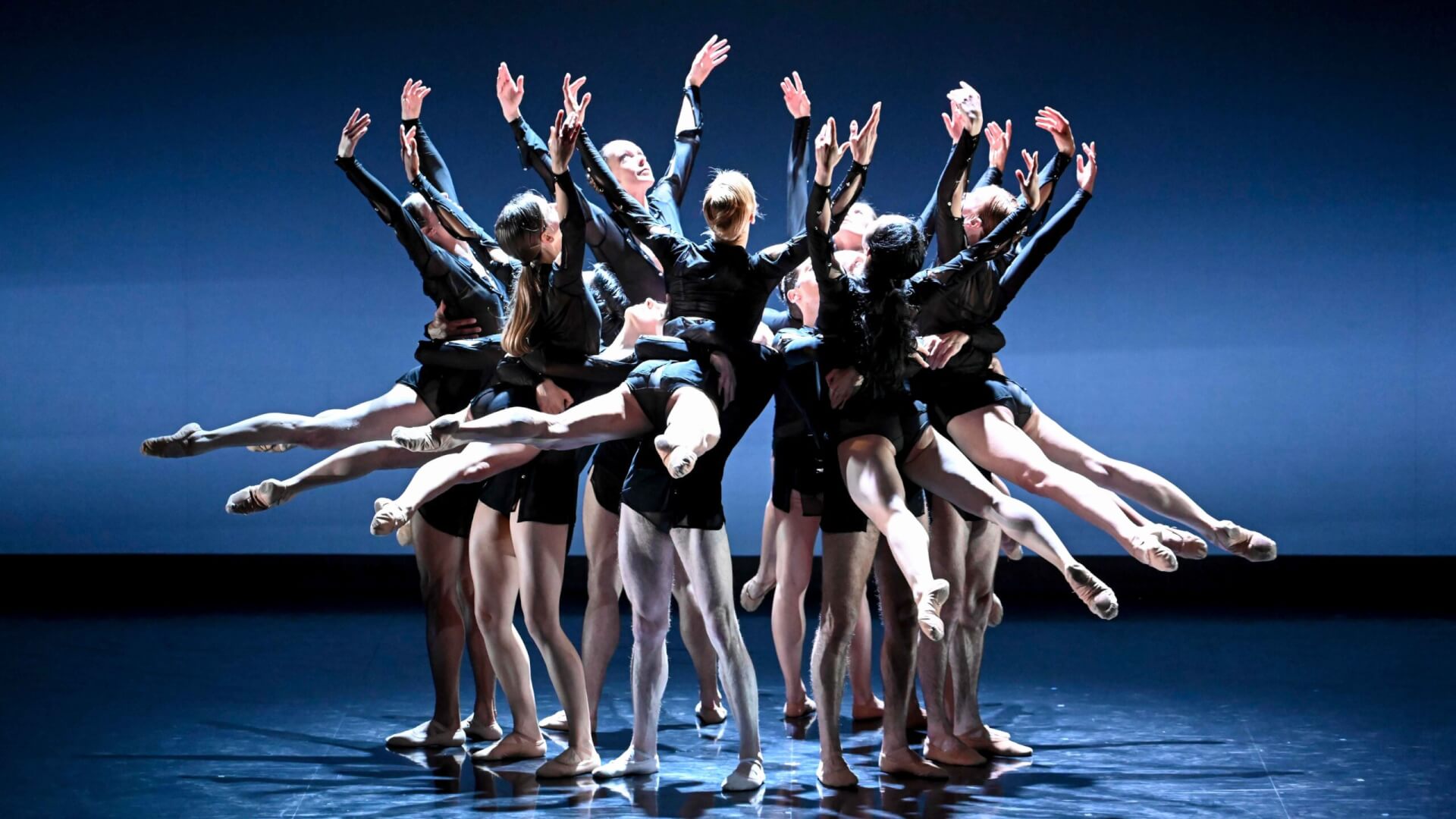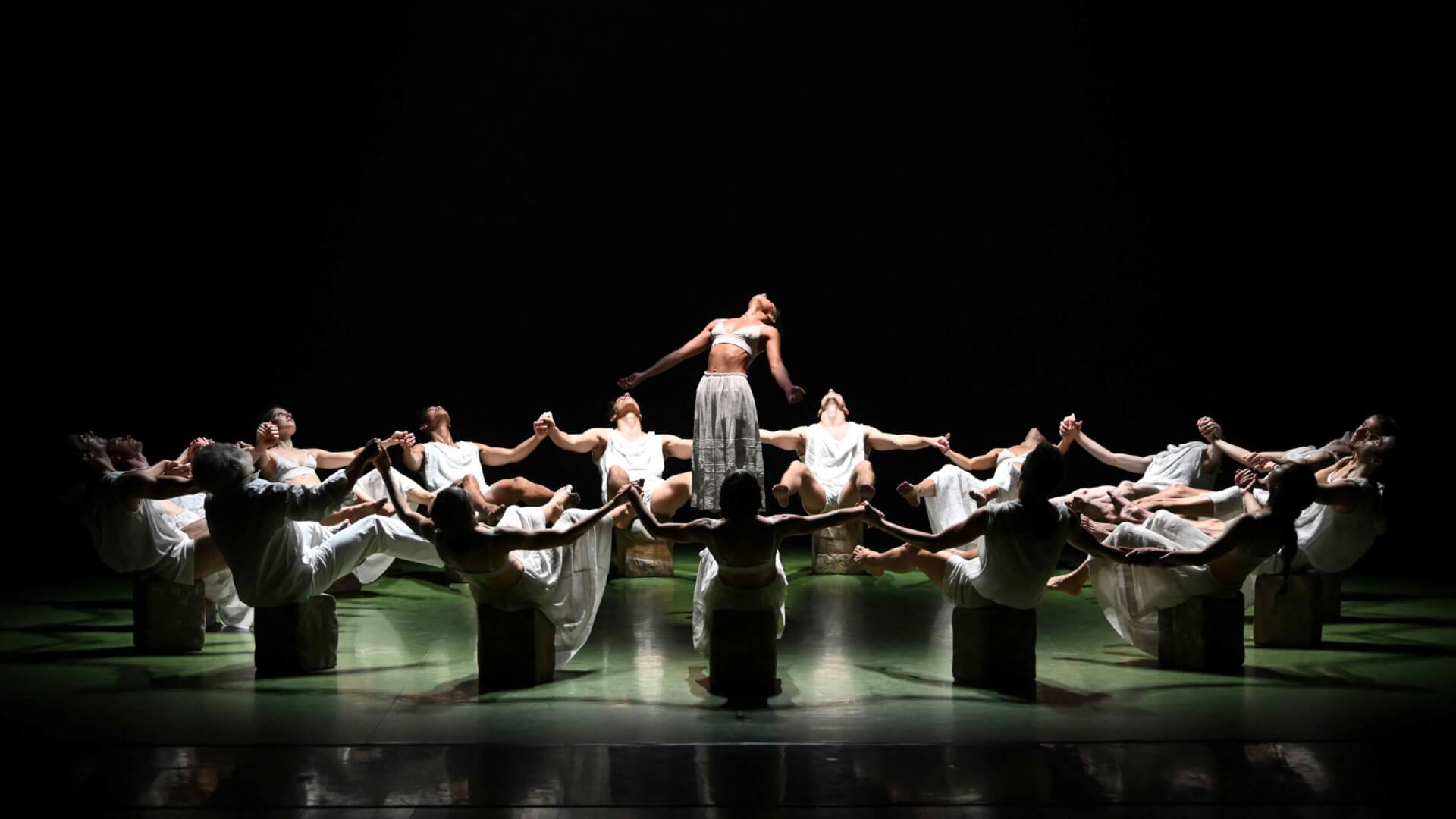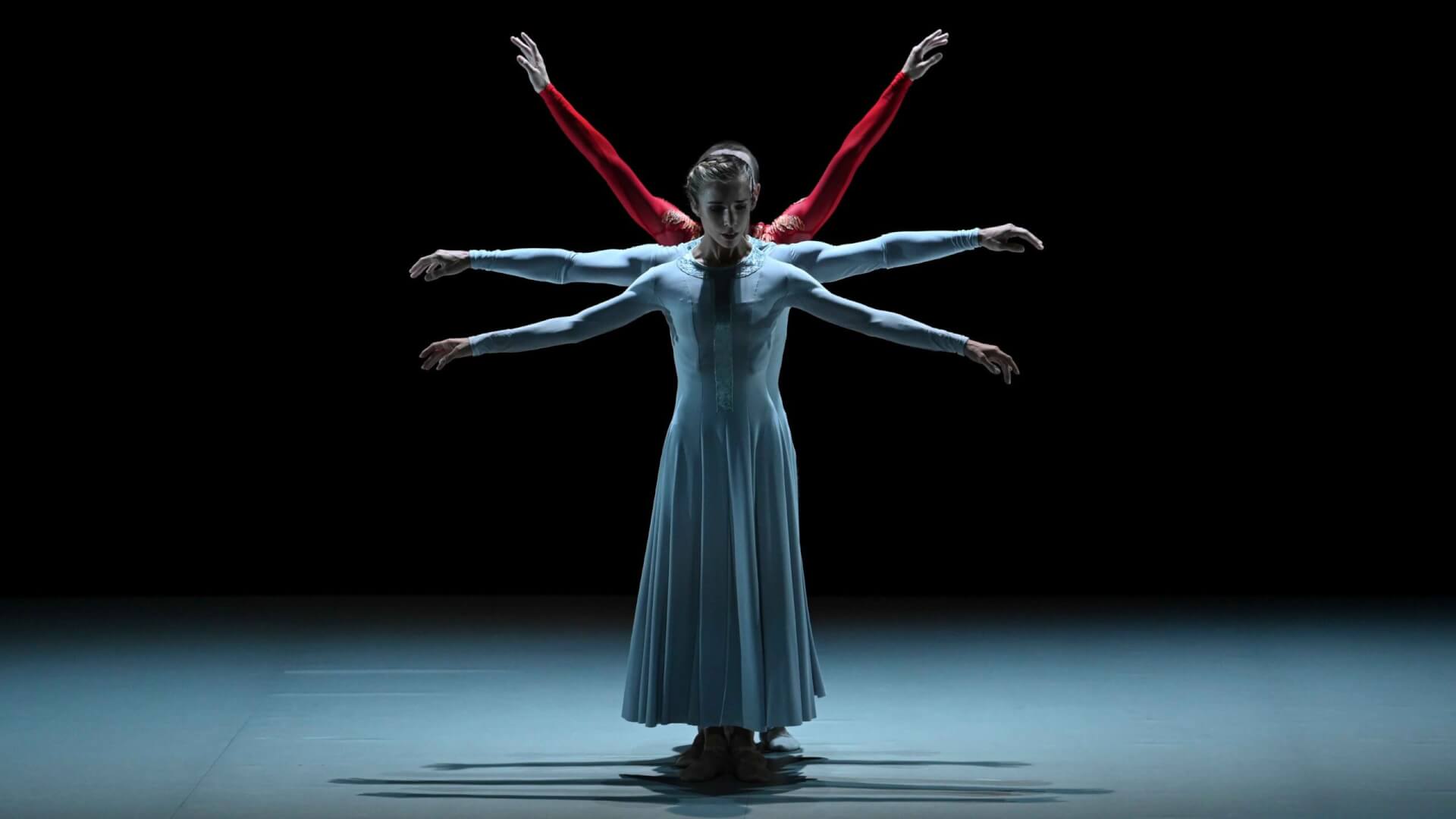Première Française
-
4 au 12 November 2021 Paris • Chaillot - Théâtre national de la Danse
Première mondiale
Musique
-
Igor Stravinski 3
Chorégraphie
-
Thierry Malandain
Décor et costumes
Lumières
-
François Menou
Réalisation costumes
-
Véronique Murat, Charlotte Margnoux
Réalisation décor
Réalisation accessoires
Réalisation décor et accessoires
Coproducteurs
-
Donostia Kultura - Victoria Eugenia Antzokia -Donostia / San Sebastián (Espagne) – Ballet T, Chaillot-Théâtre national de la Danse – Paris, Théâtre des Salins, Scène nationale – Martigues, Le Cratère – Scène nationale Alès, Opéra de Reims, La Rampe – Scène conventionnée Echirolles, Opéra de Saint Etienne, CCN Malandain Ballet Biarritz
Partenaires
-
Théâtre Olympia d’Arcachon, Le Parvis - Scène nationale de Tarbes Pyrénées, Théâtre de Saint Quentin-en-Yvelines - Scène nationale, Festival de Danse Cannes - Côte d’Azur France
Ballet
-
for 22 dancers
Durée
-
30 minutes
Brochure
Note of intent
Based on an idea by Laurent Brunner, Director of the Château de Versailles Spectacles, and Stefan Plewniak, Violonist and Principal Conductor of the Royal Opera of Versailles, this original production, which will premiere in November 2023, combines Antonio Vivaldi’s famous Four Seasons and the little-known works of his contemporary and compatriot Giovanni Antonio Guido.
Having unfurled their passionate energy long before their publication in Amsterdam in 1725, the first melodies form a cycle of four violin concertos naturally named Spring, Summer, Autumn and Winter. Each title has three movements, whose main purpose is not virtuosity. New at the time, they were preceded by sonnets attributed to Vivaldi and provide a succession of pastoral scenes descriptively celebrating nature.
One of the most international opuses with more than a thousand recordings to date, not counting concerts, catalogues of telephone on-hold music and adverts, this universal hymn to nature, rediscovered in the mid 20th century, has the ability to please. Hence its immense popularity, hence also the weariness, or even the rejection that the work can arouse. Thus, after Igor Stravinsky stated in 1959, “Vivaldi is greatly overrated - a boring fellow who could compose the same form so many times”(1) , people talked about easy music to the point of saying, such as the composer Luigi Dallapiccola, or Stravinsky again(2) , that “the red-headed priest” composed “the same concerto five hundred times”. This is not true and completely unfair.
That being said, in all their grandeur, in terms of their promise, it is true that the Venetian musician’s Four Seasons have been heard so often, exploited so much to the point of misunderstanding, that in response, having become truly old repetitive melodies, they can be irritating, cause total indifference, or in our case, overwhelm us with gloomy thoughts. And even more so in today’s disillusioned and corrupt climate, where nature’s deterioration constitutes an existential threat. In contrast, since the word nature literally means birth, Giovanni Antonio Guido’s The Four Seasons of the Year should, because of their unique nature, provide a breath of fresh air, renewal and a reason for hope.
Published in Versailles around 1726, but perhaps earlier than Vivaldi’s, since they may have been written around 1716 for the opening exhibition of four oval paintings by Jean-Antoine Watteau representing the four seasons which
adorned the Paris mansion of Pierre Crozat, Treasurer of France, patron and collector. As for Guido, a first-rate Genoese violinist, he served Philippe d’Orléans, Regent of France, before entering the service of his son Louis. Written in the French form of Suite de danses, like Vivaldi, the score sets four anonymous poems to music - Les Caractères des saisons. Guido attempted to describe seasonal changes by adding notes of green, blue and very light pink. But also rural deities, as in Les Saisons by Abbot Jean Pic, performed at the Royal Academy of Music from 1695 to 1722, with choreography by Louis Pécour. Accompanied by melodies composed by Pascal Collasse and Louis Lully, the ballet had four “entries”, a sacred number associated with creation, balance and harmony. Four doors that we will cross through to walk on the paths of idealism.
How far will we go like this? I don’t know… Guido’s bowing respectfully imitates the course of the seasons, but we are at the theatre, where everything is false and gets lost in the atmosphere.
This is the nature of the choreographer’s problem with the limits of his art. Whereas the solution, if we wish to continue gazing at nature when it opens its heart to spring, is to respect it without limits or pretence.
After the hymns to humanity and the living which comprised Le Sang des étoiles (2004), Noé (2017), la Pastorale (2019), Sinfonia (2020) and L’Oiseau de feu (2021), ideally, Les Quatre Saisons should not become false in its attempts to be real.
Thierry Malandain, February 2021(1) Conversations with Igor Stravinsky, Robert Craft, 1959, p.84
(2) Vivaldi : Amour de la Musique, Marc Pincherle, 1955, p.55




